The Guide on How to Get People to Take Your Survey
The Guide on How to Get People to Take Your Survey
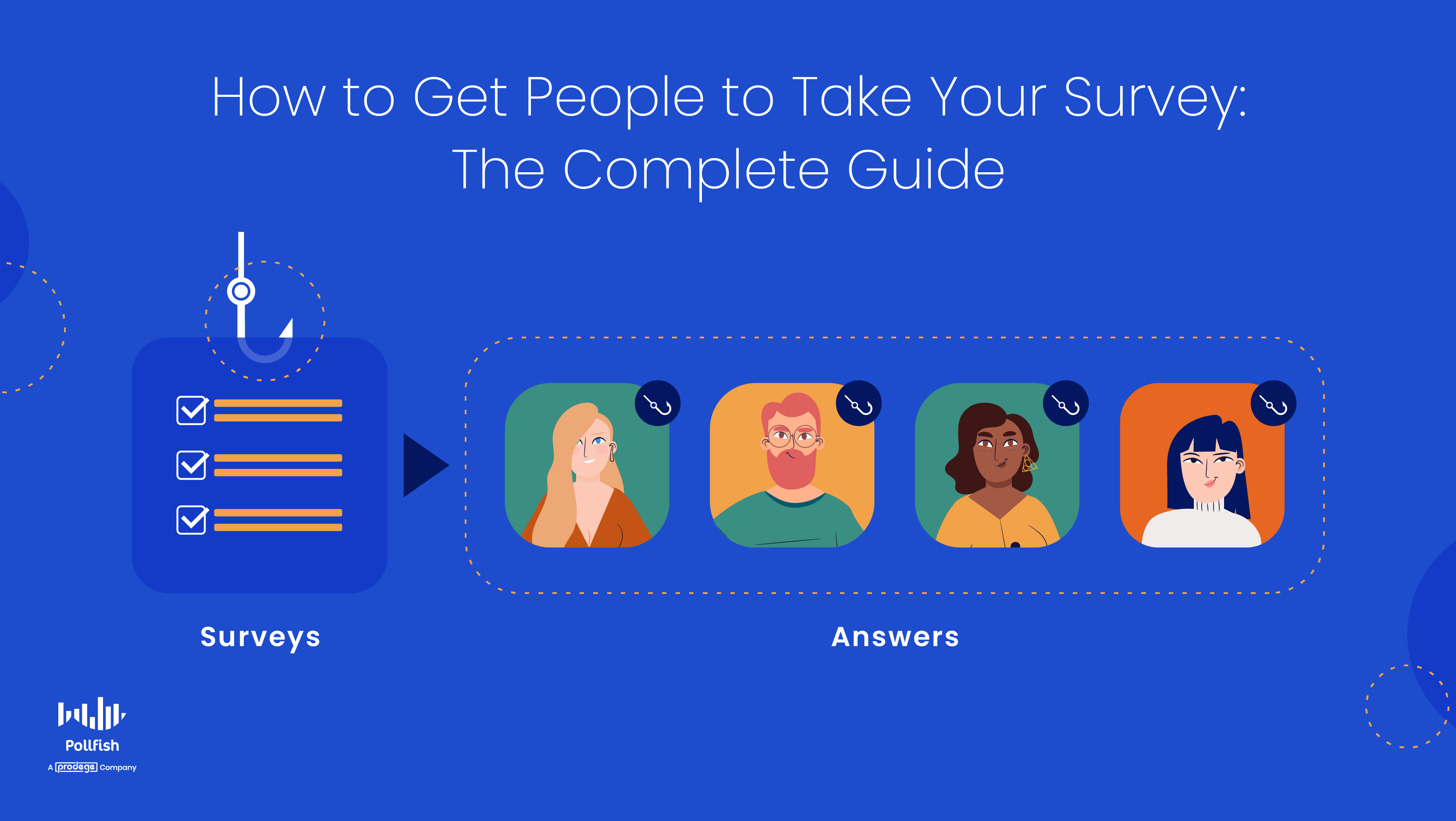
You're in the right place if you’ve ever wondered how to get people to take your survey.
Surveys have become an increasingly vital way to study your target market, as they are no longer obsolete pieces of paper that get snail-mailed and ignored.
Instead, surveys are currently distributed via polling software through an online survey platform (like Pollfish). Such a platform can include various capabilities to fine-tune and optimize your survey, from targeting to deployment, to analysis and beyond.
In addition, surveys are crucial, as they can be deployed at any stage of the customer buying journey. This extends what you can learn about your potential and current customers.
As such, you can study your customers before doing anything, thereby forming your marketing strategy from your survey. You can also survey people after you released a product or completed a campaign.
At any rate, surveys provide an invaluable means for understanding your target market so that you can serve it well and retain your customers.
This article explains how to get people to take your survey at length in the two major methods of survey deployment.
Two Major Ways to Deploy Surveys Digitally
While there are countless ways to send surveys digitally, your survey deployment method is entirely dependent on your online survey platform — unless you send surveys through other means, such as syndicated research.
This form of research isn’t as potent as using a DIY survey platform, since, in syndicated research, the direction of the survey campaign is entirely decided and owned by a research firm. With a DIY platform, you are in full control and have full ownership of your survey results.
With a market research platform, there are usually two main ways you can distribute your surveys:
- A mass network of publishers
- This method can deploy your survey to millions randomly.
- This method works best via random organic sampling and Random Device Engagement (RDE).
- Respondents are reached randomly, where they exist online voluntarily.
- Distribution through chosen digital places / specific people
- This involves sending your surveys or making them available on particular digital properties, often, the ones you choose.
- These digital spaces can include:
- Website home page
- Landing pages
- Static site pages
- Carousels
- Checkout
- After a customer service session (ex: chat)
- Social media pages
- Emails
- Websites you’ve partnered with
- Mobile apps
- With this method, you can reach people randomly, as well as prompt specific people to take your surveys. These can be customers whose contact information you already have.
- This method requires using the Distribution link feature.
How to Get People to Take Your Survey
Now that we’ve established the two major ways to distribute your survey, it’s time to get to the crux of the matter: what you can do to get respondents to take your survey — and complete it.

While it may seem like you need to follow two separate sets of best practices to align with the two key ways of deploying your surveys, you don’t.
That’s because the tricks to get people to take and finish your survey are relatively the same throughout any means of distribution. The same things will continue to irk your respondents, much like the same best practices will quell their irritation and motivate them to complete their surveys.
Thus, you should heed the following advice and incorporate it into all your surveys, regardless if you deploy the surveys across a vast network of random users or send them to specific places or to specific respondents.
By doing so, you’ll get more responses, thereby increasing your survey completion rate and obtaining your responses sooner.
1. Keep your questionnaires short.
No matter how convoluted the topic is, it is always best to keep surveys short.
If you’ve won over respondents to fill out your survey, a feat in itself, don’t sabotage this by creating long-winded questionnaires.
Just because someone agreed to partake in your survey, doesn’t mean they’ll stay. They can drop out at any time they feel overwhelmed by too many questions or as though they are wasting tier time.
Or, they may simply get bored and abandon your survey.
Keeping your surveys short will stave off survey attrition. Ask no more than 10 questions, 15 at most. Any more will require an incentive to partake.
2. Lure respondents in with a strong introduction.
This exists as the first page respondents will see in their survey.It can also take the form of the title or call-out of your survey.
You’ll need to lure in respondents with something that sounds both interesting and easy for them to do.
As aforementioned, no one wants to waste time with lengthy surveys. As such, promise that the survey is short with language such as: “Take a quick, 5-minute survey” or “take a fast 5-question survey.”
This will entice potential respondents of a survey experience that won’t take too much time from them from the get-go.
3. Make your respondents feel special.
You can make respondents feel special by acknowledging the importance and usefulness of their participation.
No one has to take a survey and your respondents know that they are primarily for the benefit of your business.
Remind them of how important their responses are. You can mention the specific purpose of the survey, along with what and who it’s meant to help.
As such, you’ll partially reveal your survey campaign to them, but it’s okay, as you’re not revealing your exact goals. You’re simply going to state why it’s helpful for customers such as themselves.
4. Keep your questions highly relevant.
The advanced skip logic feature, which routes respondents to relevant follow-up questions based on their previous answers is key to this.
This feature directs respondents to different questions, specifically, a question that is most relevant to the respondent, based on the answer they had previously provided. That way, the experience is far more personalized and the questions make more sense.
You wouldn't want to ask a question that contradicts the answer that the respondent provided in a previous question. Not only will this annoy the respondent, but you’ll also be bogged down with data from question that you don’t need.
For example, if you asked if a respondent has heard of a particular brand and they haven’t, it would be irrelevant and useless to follow up with what they like or dislike about the brand in question.
5. Offer survey incentives.
There are a number of incentives you can use to create buy-in from your intended respondents. This is especially important if you’re sending surveys the second major way: to specific places or specific people.
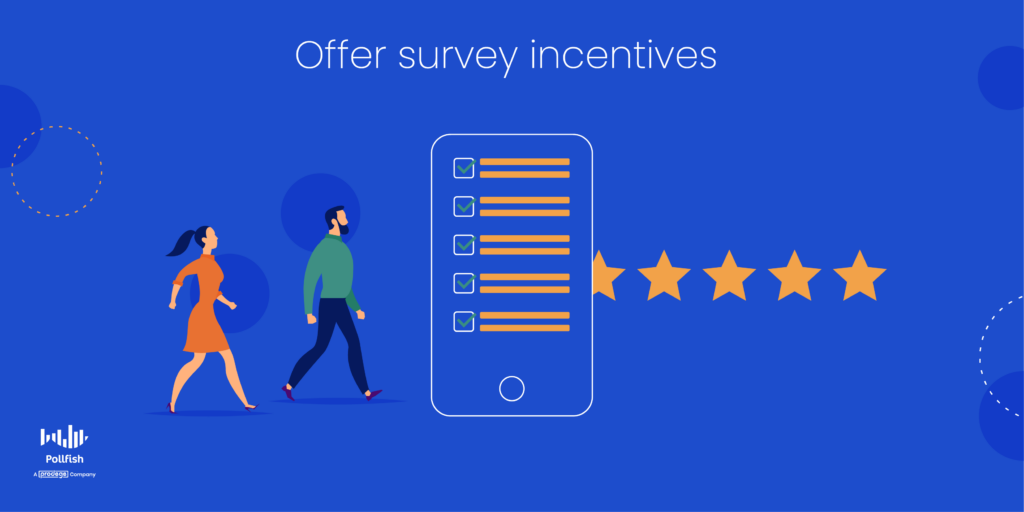
In this case, respondents will know exactly who is reaching out to them. This is true even if they opt-in to take a survey themselves that they’ve found by visiting, say, your social media, (as opposed to you reaching out to them directly). They’ll still know the brand they’re working with.
Thus, it’s even more important to have your survey framed in the best possible light, as your respondents know it’s tied to your business.
A survey incentive will do just this. In addition, incentives are some of the biggest motivators to complete a survey or do virtually anything else. Even if it is a small incentive, it is useful in that respondents know that they’re somehow being rewarded for their participation.
Essentially, they’ll have something that's in it for them rather than simply knowing they’re helping others.
Remember, survey incentives can be monetary and nonmonetary alike.
6. Be mindful when you ask sensitive questions.
Some survey campaigns will deal with sensitive topics, the kind that not everyone is comfortable with sharing.
Most people aren’t willing to discuss private information, especially if it deals with heavy subject matters such as death or loss.
Many people will be hesitant to answer questions that simply mention the aspects of their lives they intend to never share. Thus, be careful in how you ask sensitive questions. Sometimes, you may want to omit them altogether.
Sensitive questions can include questions on the following topics: religion, politics, self-identification, unpopular ideas, illegal or frowned upon behaviors, as well as questions that seem to require socially acceptable responses.
As such, be as reassuring as possible and don’t make judgmental implications or use such a tone.
7. Assure respondents of their privacy.
Whether it’s in the call-out, the introductory page, the title or the thank you page, make sure you guarantee respondents their privacy.
It’s ideal to make this known as early in the survey as possible, because no matter how light-hearted or inconsequential the topic of the survey may seem, users will still want to remain anonymous.
As such, your respondents will be less hesitant to take your survey if they know their privacy is assured right off the bat.
Don’t forget to make your surveys adhere to digital privacy laws!
This cannot be overstated, especially when it comes to the GDPR. Although the GDPR is an EU regulation, it can also apply to the United States and other countries in certain conditions. The GDPR applies to the US when you’re dealing with European netizens.
This means U.S. businesses, nonprofits and universities that target or track the online activity of users in the EU must comply with the GDPR. There are various ways to do this, such as asking for respondent consent, including an opt-out button and using end-to-end encryption.
9. Ensure that all questions are straightforward.
Avoid confusion or questions that involve a lot of deep thought.
That’s why it’s critical to use simple and easy-to-understand language.
This will differ, of course, based on the target audience of the survey. Some audiences understand scientific jargon, some understand technical language, and some are perfectly familiar with literary language.
But not everyone is. Most people don’t care to put much thought into a survey, especially one they are taking for free. Thus, avoid any ambiguity in your questions and assure that they make sense to your target market.
If you need help constructing your survey questions, we offer various survey templates, which you can use for inspiration and edit them to your liking.
10. Make your survey lively and retain interest throughout the process.
This is where you get to flex your creative muscles.
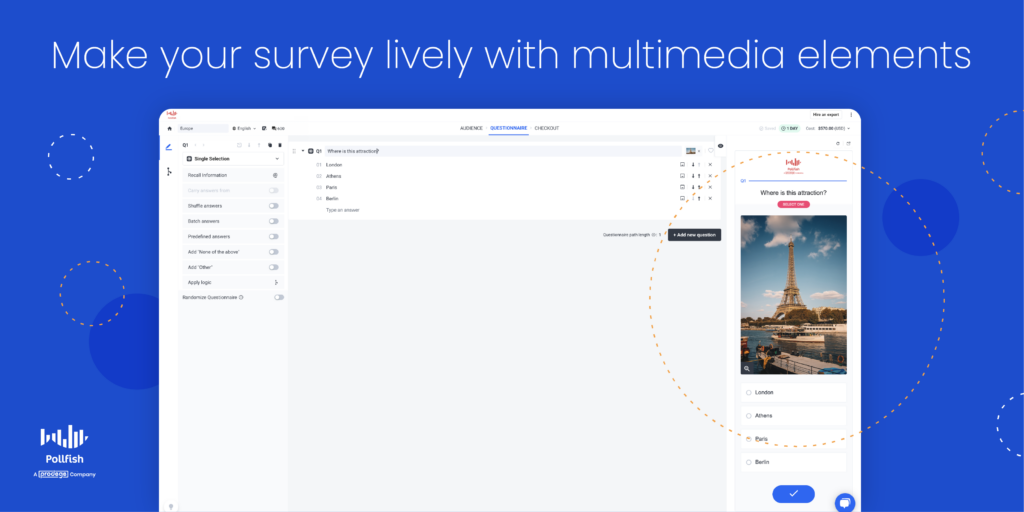
There is no hard and fast rule to make your surveys interesting. However, we suggest doing the following to spruce your surveys up:
- Ask questions that are not just relevant, but presented in a creative way, one that’s not common.
- Depending on the subject matter, use humor to draw out laughter.
- Add text that prompts respondents to continue the surveys. Ex: Ready to take a dive into [a cool ad, keys news of the day, the world of…]
- Use multimedia elements, such as images, GIFs, videos and other files so that your survey isn’t as text-heavy and offers something pleasing to the eye.
- Use a variety of questions (Matrix questions, stars and emoji scales, bipolar questions, drill-down questions and more. This too provides visual appeal and wards off boredom.
As you can see, there are various ways you can make your survey lively and retain respondents’ interest. With a strong online survey question, it should be easy to do all of the above and more.
Remember to mix and match questions. And yes, surveys can be visually appealing too.
11. Provide access to results.
This does not have to be immediate and likely won’t be. After all, you’ll need to have collected all required survey responses before you even have any results to share.
Thus, provide them with the option of having the results sent to them. This can be in the form of a link or asking respondents to share an email address.
The latter is even more useful, in that it gives you access to your customers’ emails. But bear in mind that not everyone will be willing to share their emails.
As such, it’s useful to have a webpage with survey results that you can create before you’ve gathered data. This page should mention that it will be updated with the results, once they are ready.
Doing so will not simply make your survey more appealing to take part in, but it will also build brand trust, a must to retain customers and attract new ones. When it comes to the latter, it’s important to build credibility, as that is key to the onset of your relationship with new customers.
Attracting Everyone in Your Target Market
When it comes to getting people to take your survey, there are various approaches you can take. From simplifying language, to offering different question formats, this can all be executed well with a strong online survey platform.
A valuable survey provider will grant you all the functionalities necessary to build a good survey, one that draws in interest and gets respondents to complete the survey.
Our survey software allows you to establish a thorough survey data collection, one you can customize to your liking, view however you please and organize to the max.
In addition, with our vast array of question types, you can create any survey type to aid any research campaign.
Researchers can reap a wide breadth of information on their respondents and access a wide pool of insights in their survey results dashboard.
In addition, there’s the advanced skip logic feature, which routes respondents to relevant follow-up questions based on their previous answers.
Needless to say, our survey platform is optimized for both the respondent and the researcher. Thus, everybody wins!
With a research platform offering all of these capabilities, you’ll be able to easily lure and retain a survey target audience, one that will work through your surveys until they’re complete.
Excelling with a Fiverr Market Research Alternative
Excelling with a Fiverr Market Research Alternative
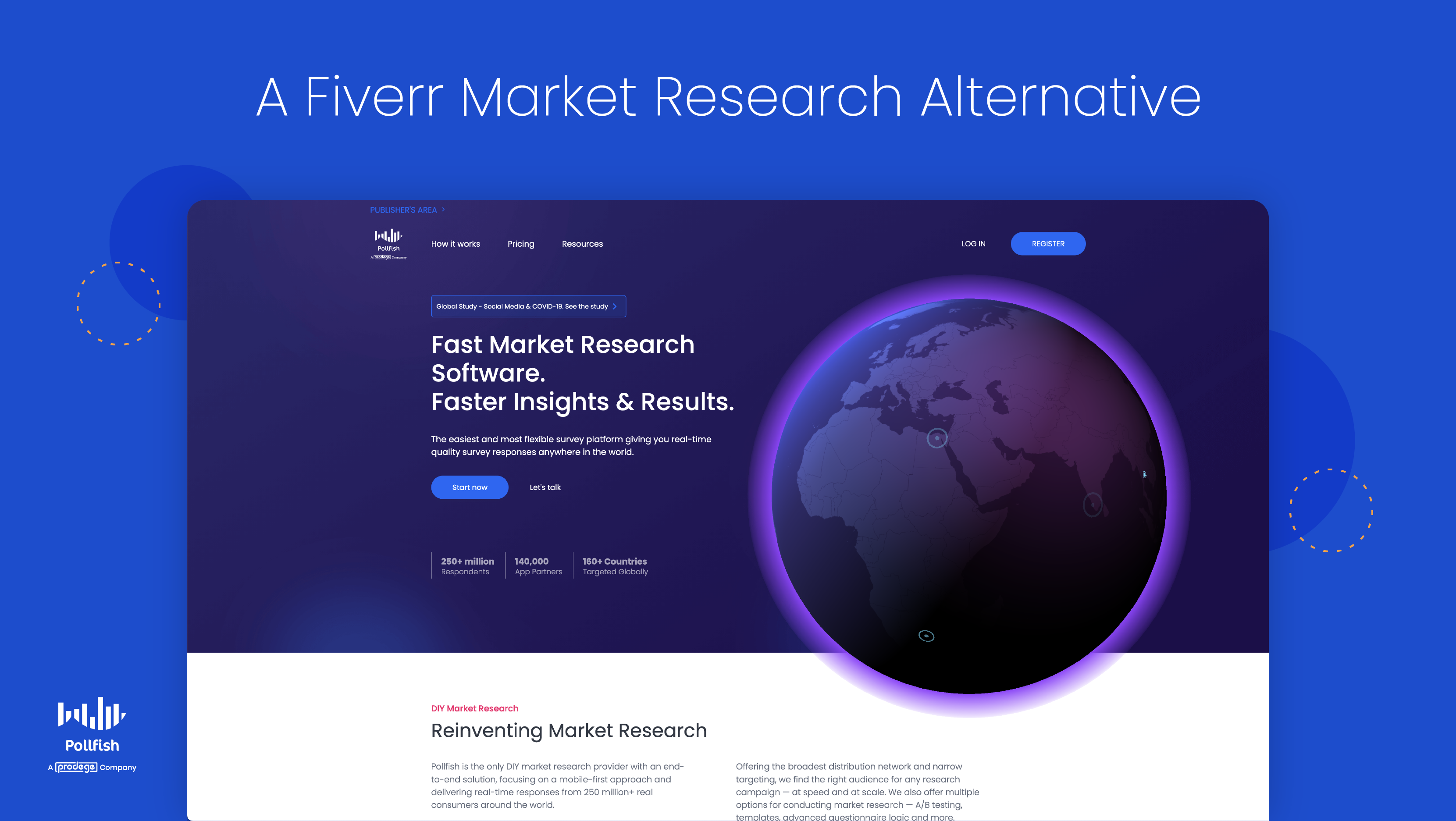
For small businesses, market research can seem expensive.
Sometimes they turn to low-cost freelancers on Fiverr or Upwork to conduct their market research because they don’t know how easy and cheap it is to do it themselves with Pollfish.
Fiverr market research is yet another research option many businesses can leverage. Given that you can choose from a variety of market research techniques, it’s easy to see why Fiverr may appear to be an appealing platform for conducting such research.
After all, more and more businesses have been using this platform, owing to its 57% year-over-year increase in 2021 alone.
It achieved a 20.59% annual growth spend in 2022, while maintaining over 3 million active buyers. Many more use the site as casual patrons, along with its high concentration of freelancers.
While these statistics and facts prove the popularity of the website, how useful is it for conducting market research? — an absolute must for understanding and catering to your customers.
Is there a better way to conduct market research and study your target market?
We’re here to show you that there is.
This article delves into how Pollfish is an excellent Fiverr market research alternative, comparing it with the Fiverr platform and explaining how it provides a superior experience.
Understanding Fiverr Market Research
Before diving into the market research factor, it’s important to first understand what exactly is the Fiverr platform and what it does for businesses.
What is Fiverr?
Like Amazon, Fiverr is a global online marketplace, except rather than selling physical goods, this platform puts freelancers on offer for various services. Businesses and various other entities use it to find and connect with freelancers for a variety of digital services.
Although businesses of all sizes can use Fiverr, it is especially pertinent for businesses that seek to outsource workers, rather than hiring full-time staff.
Thus, businesses hire freelancers on this platform to perform what’s known as "micro-tasks," which are assignments that are relatively small and quick. These assignments are usually one-off tasks which are called "gigs" on the site.
These gigs can range from $5 to $995 per task, depending on the pricing that the freelancers set for their work.
The platform offers a wide range of digital gigs, including odd tasks (think silly videos) and professional services that require specific skills. The latter is where market research comes into the mix.
What is Fiverr Market Research?
Fiverr market research is composed of a breadth of users offering their research services to buyers on the Fiverr platform. These users are the freelancers that put their services on offer on this website.
The platform offers both primary and secondary market research. The latter involves conducting internet research, which does not contain the full picture when it comes to studying your target market (more on this in the following section).
While secondary research can be extremely limiting on Fiverr, the platform also hosts primary market research services. The following sections allow you to get fully acquainted with Fiverr market research. You’ll learn of its capabilities and drawbacks.
These are both important to consider before we compare them with Pollfish, a Fiverr market research alternative.
Secondary Market Research on Fiverr
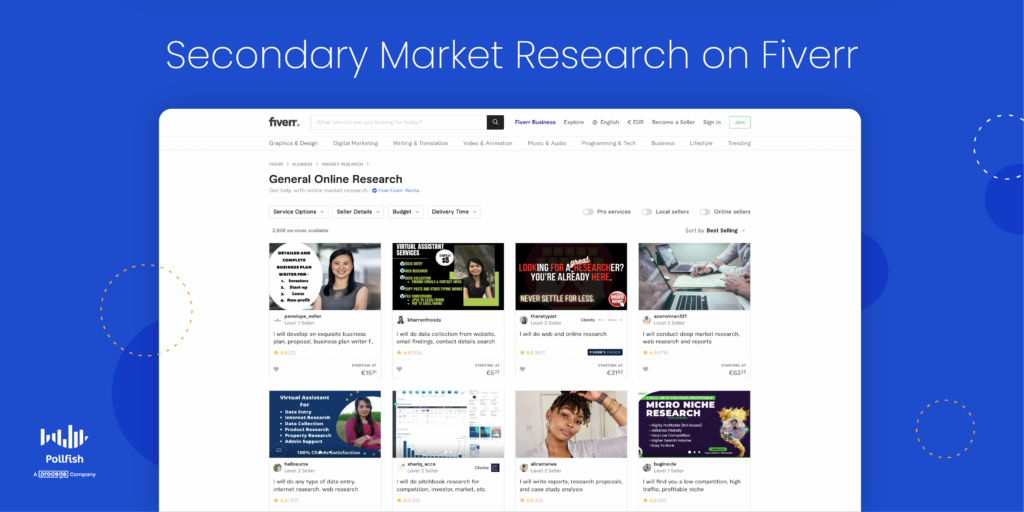
The platform offers the following secondary market research services:
- General Online Research
- Domain Name Research
- Consultation
- Full Package Qual & Quant
Although secondary research is important to conduct, and it’s often used in the early stages of survey studies, it is far from complete. You would need to conduct both primary and secondary research to paint a full picture of your target market, or a specific campaign geared towards it.
Let’s first examine secondary research on this platform. It includes sections under its top navigation of market research for different services (the bulleted list above).
General Online Research
The first is called General Online Research. This can be useful but has various deficiencies.
That’s because the scope of the online research, that is, the sources that the freelancers use, is entirely up to the freelancers. That means, they may use sources that bear little relevance to your research needs; they also may include outdated information.
Or they lack the specific sources you seek for your secondary research needs, such as a particular report or trade association literature, etc.
You won’t know this, as it is the freelancers that are conducting this research.
Domain Name Research
Another secondary market research section is called Domain Name Research. This provides researchers with lists of expired domain names. This can be useful if you are starting a new business ( or a new subsidiary of a business) and seek a strong domain name before you build its website.
It’s also of use for website name brainstorming and can be used as a supporting document for your business plan.
As such, it is not very useful for established businesses — or any that have already built out their websites/ have a domain name.
Consultation
The Consultation services section provides a miscellaneous swath of research-related offerings.
This includes guidance, expertise-sharing and advice, especially in relation to a specific industry.
It also includes services such as corporate strategy, ideas for product and business growth, trend forecasting, mood boards and more.
In essence, this is another section for gathering secondary market research, but more randomized and broader in services and their accompanying documents.
It can be useful if you’re looking for something specific in your secondary research sources and findings.
Full Package Qual & Quant
This section offers “quality and quantitative market data.”
It is yet another section with mostly secondary research services. Unlike the General Online Research and Consultation sections, this section has a greater focus on reports.
It also promises to provide both qualitative and quantitative market research, as its name suggests.
Many of the services in this section are focused on specific industries. You’ll need to look at each service provided to see all the details.
You’ll find services that offer competitive analyses, market segmentation, a SWOT analysis and more.
Some of the services claim to include reports on an industry at large, providing more of a market analysis offering than market research.
The Setbacks of Secondary Fiverr Market Research
No research platform is absolutely foolproof, but there are weaknesses and drawbacks specific to the Fiverr market research approach. First, we’ll explore the weaknesses of Fiverr’s secondary research offerings.
The biggest setback with this kind of research is that while the freelancers may offer a wide range of services, they don’t provide the source of the research — not for the secondary research, that is. (In the Fiverr primary market research section, freelancers may mention the source of their survey provider).
This means that you won’t know any of the following:
- Where the data is coming from
- Who and what entities created the information
- How old the data is and when a study was performed
- If there have been any changes since the research was performed
- Who the respondents are (no info on specific targeting)
- If there was specific targeting of respondents at all
- How the research was performed
Because of all these setbacks, as a researcher (or a business owner, marketer or other employee), you won’t have any way to validate the research.
Many of the freelancers claim to have years of market research experience. This may be true, but again, most freelancers do not explain or provide any information on how, where or who they derive their research from.
As such, it may be better to conduct the secondary research yourself, or have an employee do so. With this route, at least you’ll know where and what is providing you with data.
Your employees aren’t going to lie to you, especially if you ask them to provide the source of all the secondary research they’ve conducted.
Primary Market Research on Fiverr
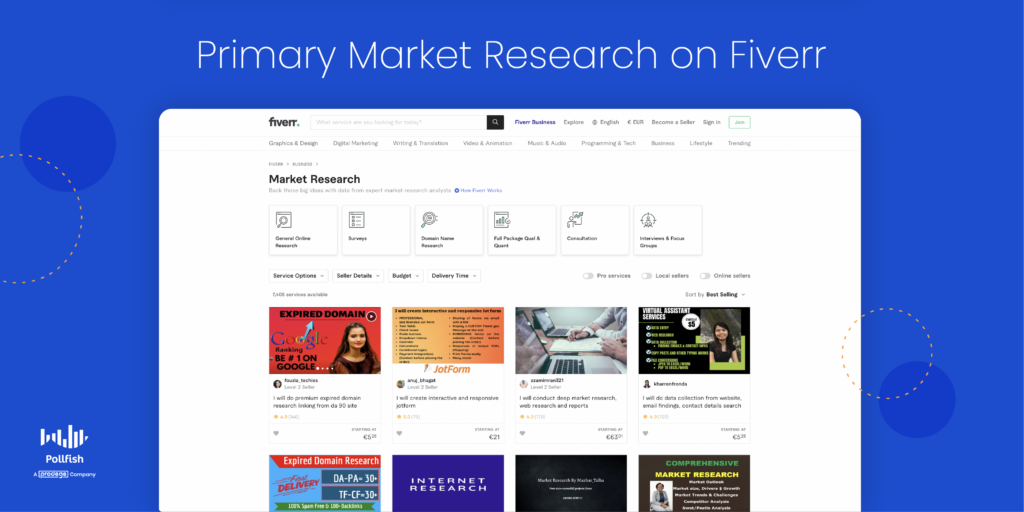
The platform offers the following primary market research solutions:
- Surveys
- Interviews and focus groups
And now, we get to the heart of market research, or virtually any type of research: primary research. This is important, as it allows you to be in more control of your study, as you get to come up with the specific research subject, along with the questions.
Primary research on this platform also includes sections under the top navigation of the different services offered (the bulleted list above).
Let’s see exactly what primary research is like on this platform.
Surveys
Freelancers offer a variety of survey-based tasks. Unlike the secondary market research services, the services here almost always reference a source. In the case of surveys, freelancers usually mention the kinds of survey providers they use upfront.
However, even in this section, some freelancers don’t mention the source of their surveys; this means, they don’t mention the survey platform that the freelancers use, nor any info on where the surveys are coming from.
The survey platforms that freelancers on Fiverr use often include a mix of the following:
- Google Forms
- Jotform
- Typeform
- SurveyMonkey
This list isn’t comprehensive, as freelancers are free to use whichever survey platform they choose.
Interviews and Focus Groups
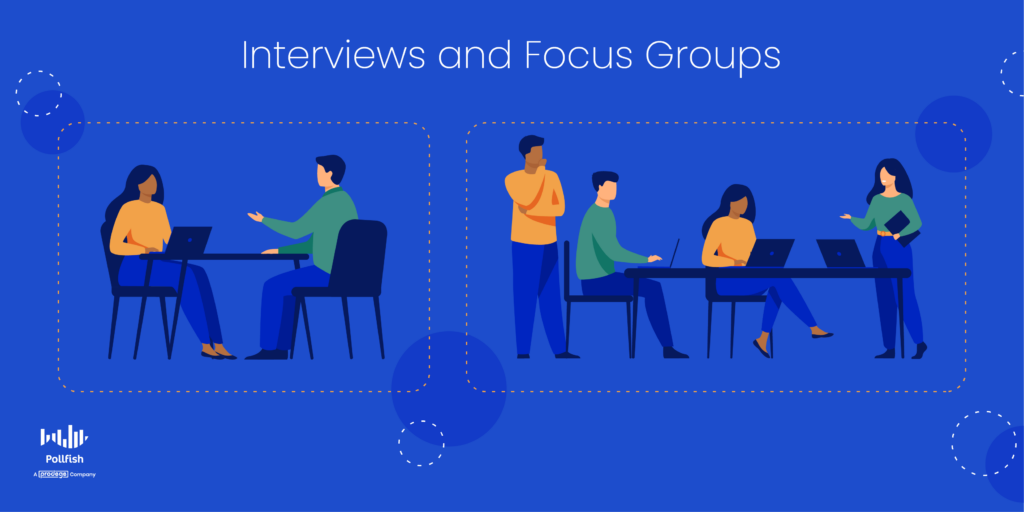
In this section, freelancers offer focus groups and interviews, the latter of which is conducted through different methods.
When it comes to focus groups, freelancers most often offer moderating a focus group. Although this section is called Interviews and Focus Groups, interviews make up most of the services on offer.
The interviews are varied: some consist of user discovery interviews, some services offer interview protocols, some claim to find your ideal customers, while others offer interviews via survey panels.
In regards to the panels, some freelancers claim they have a specific number of panelists that will take part in an interview.
The Setbacks of Primary Fiverr Market Research
As with secondary research services sold on this platform, the primary research offerings also have certain drawbacks. These prove that this platform may not be the best for your market research needs.
The first major setback is that in both surveys and the focus groups/interviews sections, not all surveys mention the source of the research. This is less common in the surveys section, as most gigs mention the survey platforms the freelancers use.
However, many if not most of the services in the focus groups/ interviews section, once again, do not provide the specific source or method of gathering the research.
For example, a freelancer may tout the fact that they have a research panel and even provide a specific number of panelists that it comprises. However, they don’t mention any other key facts, such as: where the panelists are from, how they put together the panel, what product and/or firm they used (also called syndicated research) to form the panel and more.
Thus, you are once again not privy to where your research is coming from, who it's coming from, who its participants are and how it is being conducted. Because of this, you won’t be able to cite your sources properly, should you choose to create content assets from your research.
Another major setback in using Fiverr for survey research is that it essentially deprives you of many of the benefits of conducting a survey yourself.
By using Fiverr for survey research, you’re giving up and missing out on the following benefits:
- Advanced, hyper-granular audience targeting
- Setting quotas and multiple audiences
- Forming specific questions and question logic
- Do any editing of your questionnaire
- Being able to pause, stop or edit your survey as it is running (collecting responses)
- Multiple methods of survey distribution that you can choose
- A wide variety of survey templates
- Customer support on technical issues and more
Another major weakness of survey research on this platform is that none of the survey platforms that the freelancers use measure up to Pollfish. That’s because Pollfish has higher customer satisfaction ratings and greater capabilities (more on this in the next section).
Most importantly, by outsourcing survey research to Fiverr freelancers, you’re giving up your rights to your own data, as the freelancers will be the primary owners.
When you conduct primary research yourself (as you should, hence its name), you have full control over your research project and will get to wield all the benefits of conducting primary research.
Pollfish: A Fiverr Market Research Alternative
And now, let’s discuss a strong alternative to Fiverr market research. And yes, we’re talking about our own market research platform, Pollfish.
Objectively speaking, Pollfish offers a greater amount of functionalities, as it is a kind of polling software that consistently gets updated with new features and advanced capabilities. As such, you can rest assured that you're getting one of the most if not the most robust survey platforms on the market.
And we’re not the only ones lauding them.
You’ll find plenty of review sites that posit us as potent survey providers. For example, Pollfish has higher customer satisfaction ratings than Google Forms and Alchemer.
Granular Survey Audience Targeting
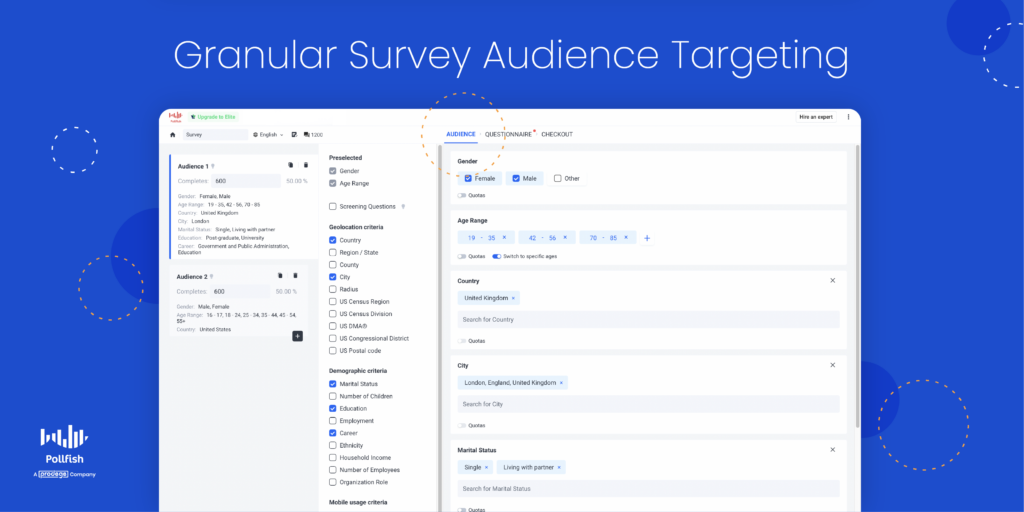
Pollfish also has a unique value in its wide swath of survey functionalities. We particularly excel at granular respondent targeting and question types.
That’s because when setting up your audience on our platform, you can qualify respondents from a wide variety of demographic, location and psychographic criteria, as well as set up screener questions to qualify or disqualify respondents.
As such, you can target anyone around the world. Pollfish doesn’t charge more to conduct global market research. That means researching customers abroad has never been easier.
Wide Variety of Question Types & Predefined Answers
There’s also a wide variety of question types you can choose to customize your survey to the fullest and keep respondents engaged throughout, thereby lowering survey attrition.
You’ll find the following question types and many more on the Pollfish platform that you can choose as you please:
- Single-selection questions
- Multiple selection questions
- Open-ended questions
- Slider questions
- Matrix tables
- Drill down questions
- Rating stars
In addition, Pollfish makes it easy to set up your questionnaire, as we run the gamut when it comes to predefined answers.
Rather than entering rows of multiple-choice answers, you can just choose a predefined answer set, such as ineffective-effective, disagree-agree, satisfied-dissatisfied and many more.
Large Batch of (Growing) Survey Templates
Don’t fret if you ever get survey writer’s blog.
Or, perhaps, you need some additional ideas. Not to worry.
That’s because, at Pollfish, we offer a growing list of survey templates for various usages. Some even go beyond business purposes and include templates for educational facilities, such as our University Instructor Evaluation Template.
We currently offer 19 survey templates on a wide variety of topics, including customer satisfaction, employee engagement, brand awareness, advertising testing and much more.
You can take full control by editing the templated questionnaires to your liking. You can thus add or delete questions or answers. It’s easy and grants you full sway over your market research surveys and projects at large.
After all, questions form the crux of the surveys.
Potent Market Research Capabilities
Pollfish is not just a survey platform; it provides a large scope of market research capabilities. That’s because you’ll find more than just survey creation on this platform.
You’ll find the following market research methods on the Pollfish platform:
- A/B testing
- We offer Monadic A/B testing and sequential A/B testing.
- Monadic A/B testing enables respondents to choose their preferences for one concept or product they randomly get out of the many that the researcher wants to test and compare, instead of being exposed to two or more at once.
- Focusing participants’ attention on just one concept at a time grants researchers a deep dive into making product, pricing and various marketing decisions.
- Monadic testing is typically used for gathering independent findings for each stimulus — a contrast to comparison testing, where several stimuli are tested side-by-side.
- Sequential A/B testing uses concepts with a specific distribution: all possible combinations are derived from the concepts that are selected to be shown.
- This way, each concept is evenly distributed and presented to the respondents at equal times at the first position.
- This reduces biases that may occur from serving a concept always at the first position of a combination.
- Conjoint Analysis
- A conjoint analysis allows researchers to measure the value that consumers place on various aspects of a product or service.
- It shows how your customers perceive the makeup of your offerings.
- As such, it unveils the distinct advantages and shortcomings of your product/service features.
- This method breaks a product or service down by its various components, called attributes and levels. Researchers can test different combinations of the components to identify consumer preferences.
- You’ll get a rich appraisal of how your customers rate the unique features of a product, rather than passing a general judgment on it.
- Maxdiff Analysis
- Also called the Best-Worst Scale, a Maxdiff Analysis is a mechanism for prioritizing new product ideas and tailoring them to consumer preferences.
- This is a kind of conjoint analysis that helps brands determine the value that their customers place on different parts and features of a product.
- Respondents choose the best and the worst option from a given set of options, which relate to a product and its feature(s).
- Respondents rate a list of items by selecting only two of them — the complete opposite of each other, labeling one as the best of the list and one as the worst.
- This technique helps to identify what your target market values and what it despises.
- The Van Westendorp Pricing Model

- The Van Westendorp Price Sensitivity Meter is a pricing model that provides data for decision-making in regards to consumer price preferences.
- The meter is a visualization in the form of a graph, with ratings on price and value, presented as responses to survey questions that focus on the prices of different products and services.
- It is used to determine customers’ willingness to pay a range of prices.
- It allows businesses of different sizes and industries to set the proper prices of their offerings, to be in line with customer expectations.
- It helps conclude the prices that your target market deems acceptable, too high, too low and optimal.
Random Device Engagement (RDE) and Organic Sampling
Pollfish operates via random organic sampling in our primary survey distribution model.
The other method prompts specific people to take your surveys.
With the second method, respondents can be customers whose contact information you already have. It also can involve random users but is sent to specific digital channels. This is done via our Distribution link feature.
Organic sampling allows you to reach non-professional survey takers and gain a far larger reach than you otherwise would have.
This is because organic sampling involves what’s known as Random Device Engagement (RDE), a kind of polling that relies on advertising networks and other digital portals on devices, to engage random people where they are, voluntarily.
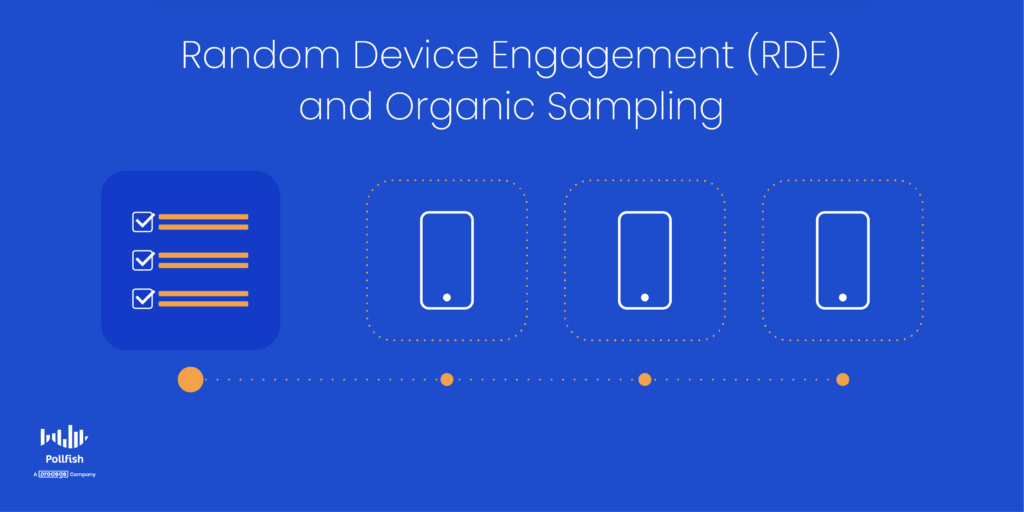
Additionally, in Random Device Engagement, the surveys are delivered to users in their natural digital environments, capturing them where they prefer to be. They were not pre-recruited and thus do not face the same pressures and conditioning that they would in a research panel.
As such, respondents are more likely to answer questions truthfully, as they have no one to answer to, are not pressured to answer in a particular way and are kept anonymous and have got nothing to lose.
What’s also incredibly important and beneficial is that our survey distribution network reaches over 250 million customers worldwide. Thus, there will always be the respondents whom you seek and that fit your niche.
Our extensive reach involves a network of 140,000 app partners, in over 160 countries.
We don’t charge extra for conducting global surveys.
Only the Finest Quality Data with Quality Checks
Given that we reach over 250 million consumers across the wild wild west, known as the Internet, we understand the possible effects on the quality of the survey data in such an environment.
In an effort to curb survey bias, survey fraud and other below-par data, Pollfish performs a wide range of technical quality checks to ensure you obtain the highest quality of data.
Our quality checks vary as a means to be as comprehensive as possible so that you reap only the most quality pool of data.

Our quality checks include the following:
- Respondent verification
- Bot detection
- VPN disqualification
- Disqualification of gibberish answers
- Carrier consistency
- A strong adherence to targeting
- Same IP Participation
- This checks if a survey has been completed before within a certain time from the same IP address of the respondent’s device.
- Trap questions, red herring questions, quality questions
- Reset ID Check
- This check occurs when the responder answered the same survey previously, but with a different device to avoid the same respondent from partaking more than once.
- Other verifications
- These involve checking ahead for duplicated IDs via IP or MAC addresses, Google Advertising and mobile device identifiers.
All of these checks are critical to providing quality data for your survey campaigns. But what else do quality checks do?
These checks are a mechanism for bypassing survey fraud, a major issue for many survey platforms.
Survey fraud, also called market research fraud, is the adverse phenomenon that occurs when survey respondents submit fraudulent or bogus responses. This can occur accidentally, such as when responders undergo survey fatigue, or purposefully.
In any case, it is critical to use a research platform that avoids this issue and grants you accurate, bias-free data. This may appear to be a challenging demand, as no platform is perfect and fraudsters will always find a way to do their dirty deeds.
However, it is possible to get around this problem with a robust system of quality checks.
Luckily, at Pollfish, we offer such a system, along with 24/7 customer support, so that if you ever come across any stumbling blocks or just need some help running your surveys, our support team is always here to help.
24/7 customer support means that you can contact our agents regardless of where you are in the world and thus, which time zone you’re in.
Full Command and Ownership of the Data
Since Pollfish is a DIY market research platform, you don’t have to rely on any party outside of your organization to carry out your market research. Instead, you have full control over the direction of your study, its respondent qualifications, timing, questions and most importantly: the resultant data.
As such, you are at liberty to conduct your research in any way you please, at your own pace. If you decide to pause your survey for whatever reason, you are free to do so. You can also edit them before relaunching them.
You can customize your surveys as you please and you’ll never be left in the dark on any step in the process: it’s your dashboard and your data.
Since it's your data, you will dictate how you use it and where or not you share it. If you do decide to share it, it will frame your business as a thought leader in your niche.
That’s because you’ll be providing your own, unique and original insights, rather than recycling information that is already available on the internet.
Reeling in the Best Research Campaigns
This article is not comprehensive when it comes to explaining why Pollfish is the best Fiverr market research alternative. We can go on and on.
You yourself will notice how our platform excels over others, by simply visiting our website, or checking out the Pollfish blog or our rich market research resources section.
We want to conclude by stating that a valuable survey provider will grant you all the functionalities necessary to build a valuable survey, one that draws in interest and gets respondents to complete it.
Our survey software allows you to establish a thorough survey data collection, one you can customize as you see fit, view however you please and organize to the maximum.
In addition, with our vast array of question types, you can create any survey type to aid any research campaign.
Researchers can reap a wide breadth of information on their respondents and access a wide pool of insights in their survey results dashboard.
In addition, there’s the advanced skip logic feature, which routes respondents to relevant follow-up questions based on their previous answers.
As such, the Pollfish survey platform is optimized for both the respondent and the researcher.
With a research platform offering all of these capabilities, it’s clear that Pollfish is the best Fiverr market research alternative for all your needs.
How to Get Customer Referrals to Strengthen Your Business
How to Get Customer Referrals to Strengthen Your Business
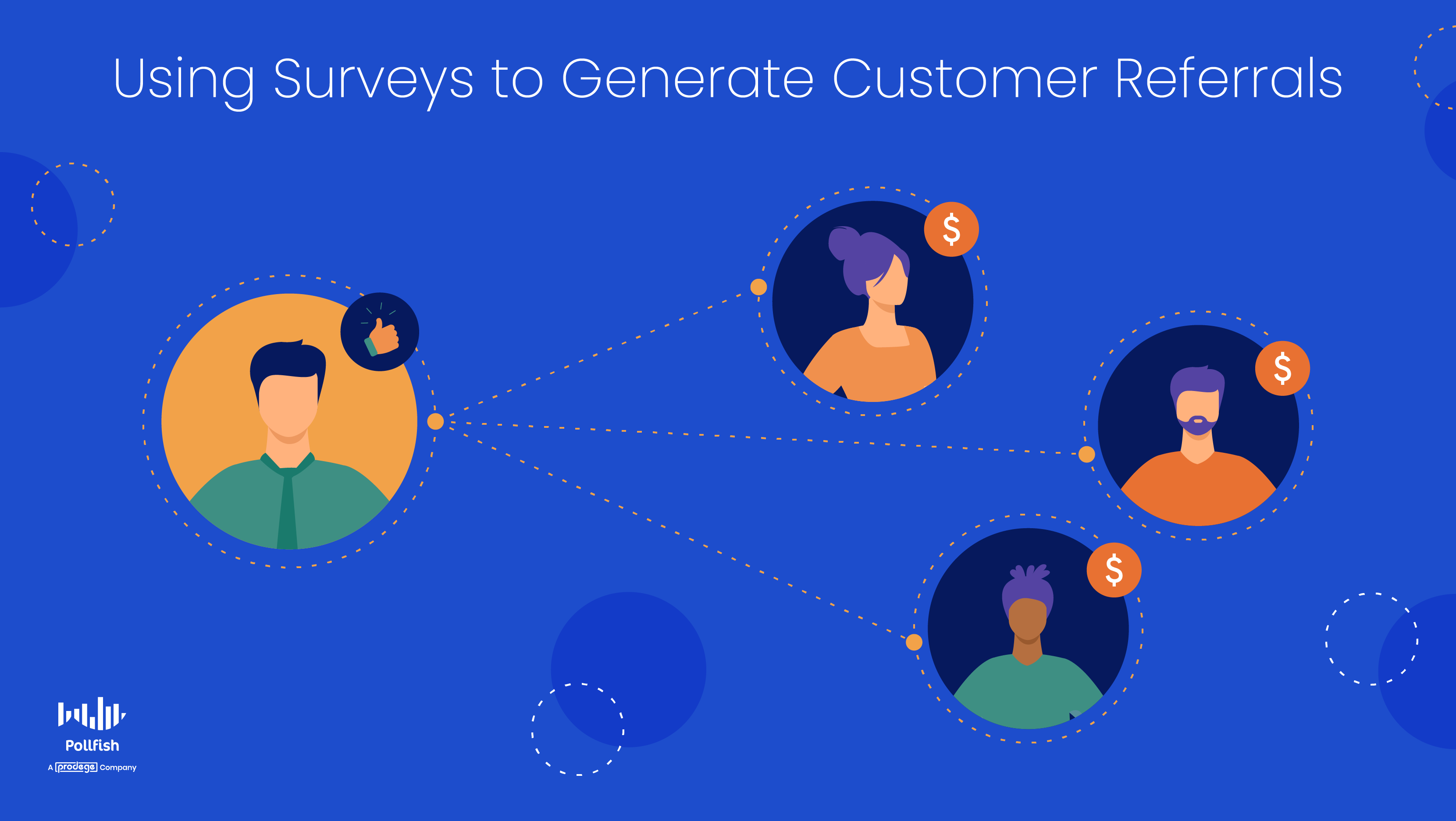
Customer referrals are one of the most powerful marketing and customer acquisition methods. They are especially effective for driving new business and even building consumer trust at the onset of customers’ relationships with companies.
There is plenty of statistical evidence that proves these claims. Firstly, consumers are 400% more likely to become paying customers when they are referred. This alone shows how invaluable it is to foster customer referrals.
In addition, 92% of consumers trust referrals from people they know. As such, they are not just more likely to buy from a brand that was referred to them over one that wasn’t, but are more likely to do so when someone close to them makes the referral.
As far as building trust early on goes, when customers are referred by other customers, they have a 37% higher customer retention rate. This points to trusting a brand, in that when customers themselves choose to stay with a company, they raise customer retention rate.
Conducting surveys can help you gain referrals.
This article examines customer referrals, including their importance, when to seek them out and how to obtain them via survey research.
Understanding Customer Referrals
As their name suggests, customer referrals refer to the practice of customers — whether previous or existing — suggest a particular brand and its products and services to others.
This is part of referral marketing, a kind of word-of-mouth marketing in which customers make recommendations to those close to them — this can include their friends, family, colleagues and other contacts (think social media followers) — about patronizing a company.
The purpose of gaining these referrals is so that those who your customers refer become new customers. As such, it is a method of customer acquisition. Although customer acquisition methods tend to be costly, customer referrals are usually done on a free basis, that is, if you’ve built up enough consumer loyalty and brand trust.
This is because when customers are happy with a company, they tend to share their positive experiences. In fact, 72% of customers will share a positive experience with 6 or more people. These can manifest as reviews, word-of-mouth recommendations, along with online referrals.
Online referrals are just as crucial as word-of-mouth referrals, given the high percentage of people in the digital space, whether it is on desktop or mobile devices. Several examples of digital referrals include the following:
- Positive reviews
- Positive mentions on forums
- Recommendations over text messages and chats
- Customer testimonials
- This is especially important to show on your website and for B2B brands.
- Positive comments on social media
Loyal and satisfied customers will be inclined to make free referrals. However, not all customer referrals are free of charge. Other kinds of customers may need convincing — that of the incentivized variety.
In these cases, brands use a customer referral program, a kind of system that incentivizes customers to either recommend their products and services, or to actually bring on a new customer. The latter refers to customers having their friend or close one officially become a customer, either by making a purchase or opening up an account with a business.
In either case, it is important to use this marketing tactic, as it grows your customer base.
The Value of Customer Referrals
These referrals bring undeniable value to a business and not just for a fledgling business that lacks brand equity and a pool of customers.
First off, customer referrals lead to an increased sense of trust in a brand. This is because instead of relying on a celebrity who is endorsed to speak positively of a business, the referral comes directly from the people closest to the customers. As such, they’ll have a higher trust of a brand upon their awareness of it.
This means that referred customers won’t be as skeptical about patronizing a company as they would with a company completely unknown to them, or even with the ones they’ve heard about, but have no positive input on from the people close to them.
Next, customer referrals prove to be extremely profitable for companies in the long term. If the statistical figures from the introduction of this article aren’t proof enough, consider the following: referred customers’ lifetime value is 16% more than non-referred customers. This is important, as it points to referred customers contributing to larger profits during their relationship with a business, also known as a customer lifetime value.
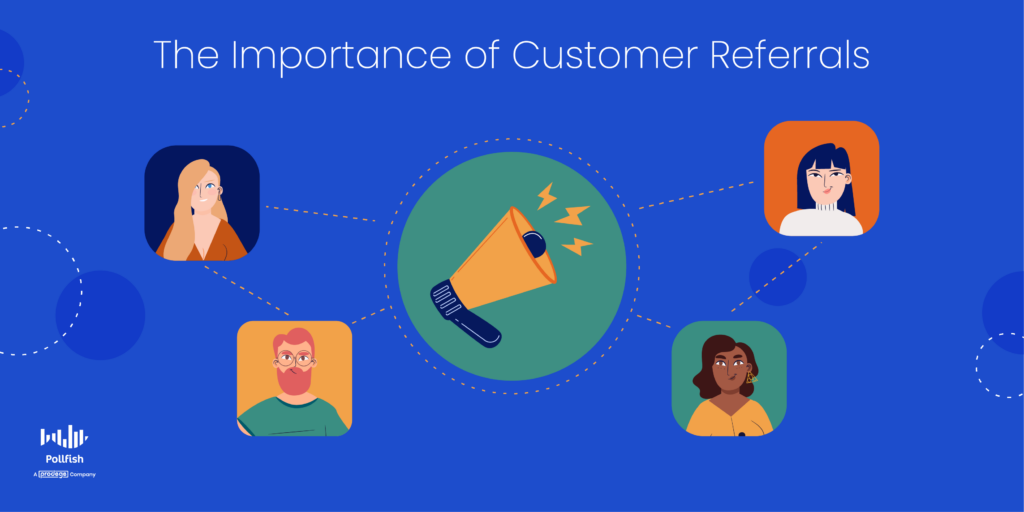
In addition, customer referrals relieve brands of the constant hurdle of customer churn, as they help lower your customer churn rate. This is because referred customers have an 18% lower churn than customers acquired by other means. This makes sense, given that their longer customer lifetime value is a marker of greater customer loyalty. Referred customers are between 16-24% more loyal than other kinds of customers, according to a study by the Wharton School of Business.
Customer referrals are also important, as they are the action of brand advocates, which are crucial to sustain for the sake of your business. Brand advocates are not casual shoppers, rather they have high levels of customer loyalty, the kind that makes them advocate on a company’s behalf for free.
Brand advocates spread positive word-of-mouth messages and take part in other essentially free marketing services for a company, such as social media mentions and user-generated content. They also help spread brand awareness and allow your brand to uphold a good reputation.
Most importantly, brand advocates promote a brand organically, which holds far more sway than a paid actor would have. As such, these kinds of customers are highly sought after for all kinds of businesses.
Finally, given the fact that referred customers are more loyal at the outset of their relationship with a business, they are more likely to remain loyal. As such, they are less likely to leave a company.
In this way, customer referrals help brands increase their customer retention, which is even more important than customer acquisition. That’s because, among many other reasons, selling to a customer you already have is 60-70% more profitable.
When to Seek Out Customer Referrals
You should aim to get customer referrals whenever possible, as they signify customer happiness, satisfaction and loyalty to your brand. As such, you should present the referral opportunity wherever customers interact with your brand.
There are several times that are most favorable for obtaining referrals. The following lists some of the best times to seek them:
- During an in-store purchase interaction.
- If you ask your customers how they feel about the service or products and they’ve responded positively, consider asking them for a referral.
- During a promotion, whether it is in-store or online.
- This can pair with an existing promotion, meaning customers would be further incentivized if they refer a friend or family member.
- Leading up to a purchase
- Use an incentive to lure customers into referring a friend or family member at key places leading up to a purchase, such as in the checkout.
- Social media posts (but not frequently)
- To keep this request novel and interesting, consider asking for referrals in your social posts a few times a year.
- As part of a survey campaign.
- This is especially useful for customers you have targeted (rather than random respondents you deployed surveys to).
- Those who provide positive responses are especially useful to request a referral to.
How to Get Customer Referrals With Surveys
You can increase or jump-start customer referrals for your business thanks to the prowess of online surveys. This is because in order for customers to be loyal enough to refer to your business, you need to satisfy them.
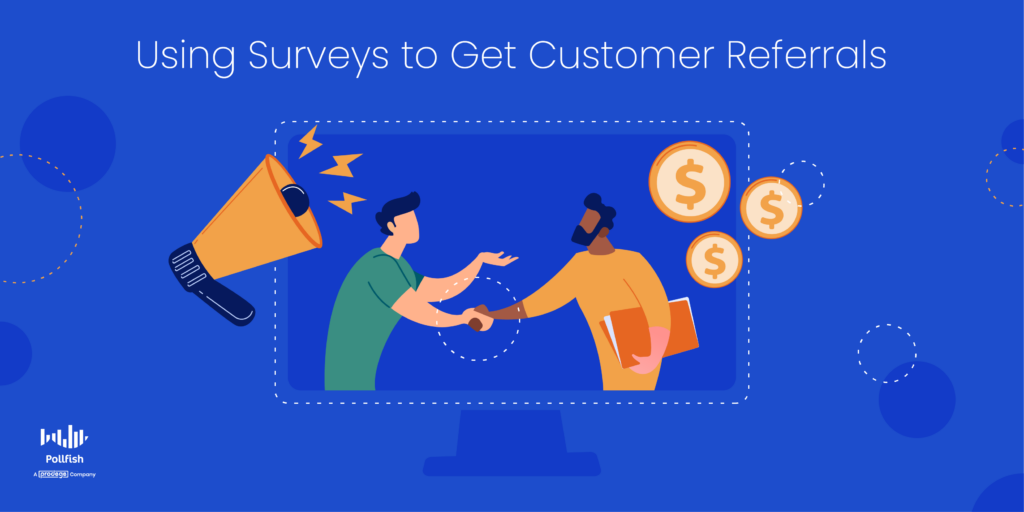
Customer happiness and satisfaction originate beyond merely a good product. Instead, you need to build trust by offering outstanding customer service, support, UX and general customer experience (CX).
In order to keep up with ever-changing customer demands, you’ll need to constantly keep watch of your customers. To do so, you’ll need to run primary market research campaigns regularly. That’s where online surveys come to the rescue.
Surveys offer a quick and convenient way to gain all kinds of customer insights from your target market, along with specific individuals. The latter depends on the kind of online survey platform you use, as not all platforms offer the same capabilities.
By using surveys, you’ll know what to change in your customer experience, along with what is performing well. This helps you optimize a wide range of campaigns and other business undertakings. As such, surveys allow you to make constant improvements. But their utility goes beyond this.
You can also use surveys to gauge the likelihood of your customers to refer you to others. After all, you wouldn’t want to ask unhappy customers to refer your company, as this may prompt them to instead speak ill of your brand.
Use the following surveys to measure how likely your customers would refer you:
- The Net Promoter Score survey
- The CSAT survey (Customer Satisfaction Score)
- The CES survey (Customer Effort Score)
- The customer service satisfaction survey
Even if you score low on these kinds of surveys, conducting further survey research can help you gain customer referrals. In addition, simply asking a follow-up question in which customers explain their score can help you improve your CX, thereby increasing customer satisfaction. This helps you build customer loyalty, the key ingredient behind customer referrals, especially voluntary ones.
When you consistently deliver a good product, service and experience, you are then on the correct trajectory to obtaining customer referrals.
Targeting Your Most Valuable Consumers
Referrals provide some of the most valuable leads you’ll ever attract. As such, you should work towards upping your referrals by studying your customers with market research. This way, you’ll have a clear understanding of the consumer preferences, along with all that they find to be adverse.
To do so, you’ll need a strong online survey platform to carry out your market research campaigns. Use an online survey platform that makes it easy to create and deploy consumer surveys. It should offer random device engagement (RDE) sampling to reach customers in their natural digital environments, as opposed to pre-recruiting them.
You should also use a mobile-first platform since mobile dominates the digital space and no one wants to take surveys in a poor mobile environment.
The survey platform should offer advanced skip logic to route respondents to relevant follow-up questions based on their previous answers. It should also make it easy to form a customer journey survey to survey your respondents across their customer journeys.
Additionally, it should also allow you to survey anyone. As such, you’ll need a platform with a reach to millions of consumers, along with one that offers the Distribution Link feature. This feature will allow you to send your survey to specific customers, instead of only deploying them across a vast network.
When you use a survey platform that offers all of these capabilities, you’ll efficiently increase your customer referrals.
Preventing Cancellation and Attrition with the Customer Exit Survey
Preventing Cancellation and Attrition with the Customer Exit Survey
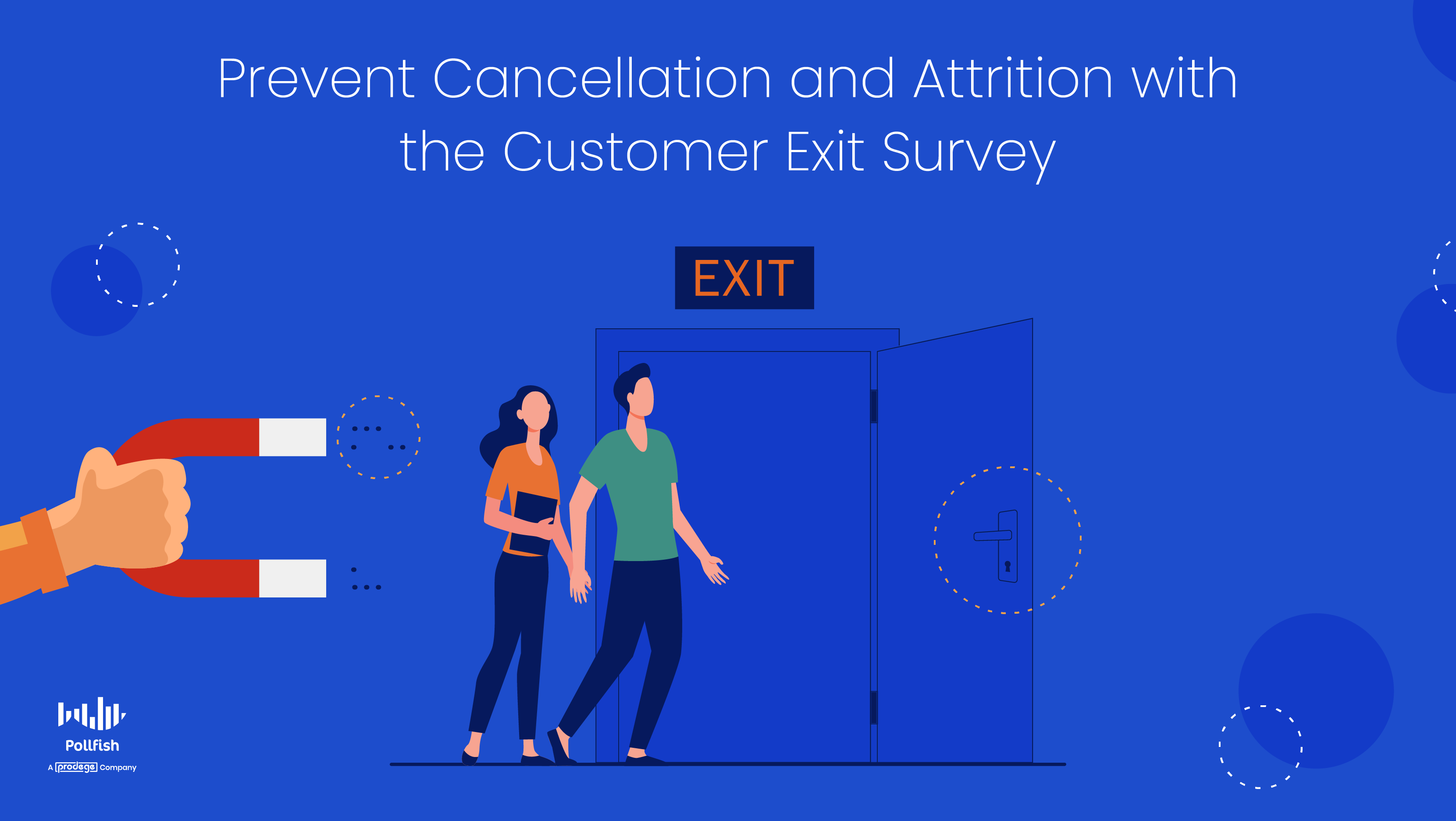
The customer exit survey is a convenient tool to use to prevent customers from canceling their subscriptions and other forms of customer attrition. All businesses experience churn and in many cases, it is preventable.
In order to evade customer attrition, you need to tackle its core cause and this survey allows you to dig its root cause up. This way, you’ll understand exactly how your consumers feel so that you can avoid dissatisfying them and optimize your brand experience.
No matter how well a business has mastered consumer loyalty, it is bound to lose some customers. The average American company loses 23% to 30% of its customers each year.
What’s more is that the loss of customers has been on the rise. Since 2016, customer retention loss has risen by 37% due to poor customer service. There are a variety of other factors that cause customers to churn — a lack of consumer loyalty sums them up, as no customer would make repeat purchases with brands they don’t trust.
This article delves into the customer exit survey, its importance, when to implement it, how to create it and more, so that you can avoid cancellations and keep more of your customers.
Understanding the Customer Exit Survey
A customer exit survey is a kind of consumer survey used to study customers who are about to cancel their subscription or already have. Although it is particularly relevant to the SaaS sector, given the prevalence of subscription-based SaaS products, it is also useful for a variety of other types of businesses.
This survey is especially applicable to other forms of subscription services, such as content subscriptions — this includes print and online magazines, newspapers, newsletters, trade magazines, etc.
In addition, you can also deploy it in non-subscription settings, given the weight of the customer attrition rate. However, in these instances, you’ll need to have conducted prior market research to glean an awareness of customers who are dissatisfied to the point of leaving your brand, switching brands or beginning an order cancellation.
There are more instances where applying this kind of survey is relevant and useful. These include the following scenarios:
- During periods of high bounce rates across different site pages
- When users begin an order and cancel it
- When users begin an order but don’t complete it
- When users start a sign-up process for notifications or newsletters but don’t complete it
- In instances where paying customers churn
- During times where customers sign up for a product but don’t use it
The customer exit survey helps reveal all kinds of sentiment surrounding your product and the experience associated with it. After all, there are various stages and components of the customer buying journey that can contribute to customers seeking to exit or already having exited.
The Importance of the Customer Exit Survey
There are so many survey types you can conduct to improve your customer experience. The customer exit survey is important to carry out for a number of reasons.
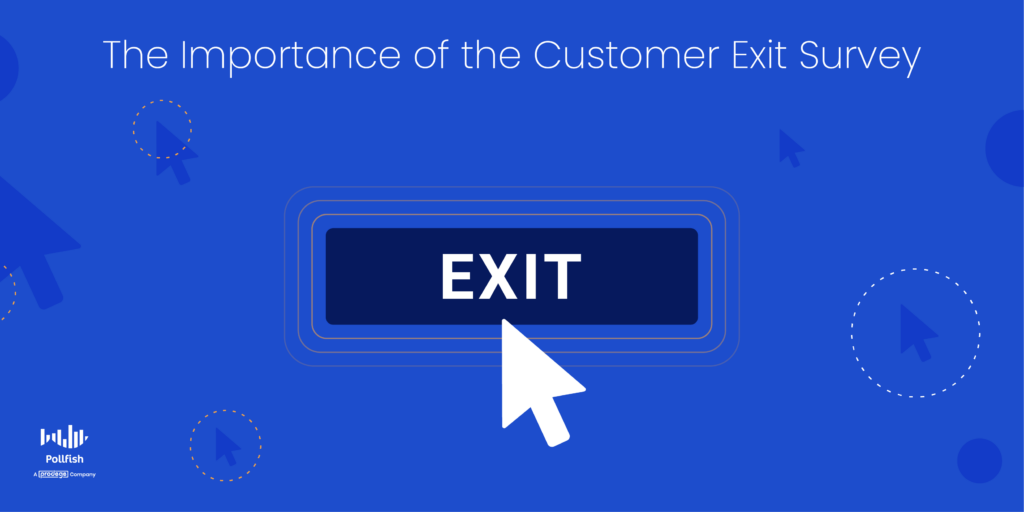
First off, this kind of survey is product-oriented. It helps you obtain crucial information about how well your products meet the needs and requirements of your customers. In regards to the product specifically, this survey extracts key information such as the following:
- Product-market fit
- You can determine if you are targeting the right audience.
- You can also tighten your product-market fit.
- Features
- It allows you to learn if your product truly provides the tools your customers need and want.
- In this way, you’ll have key information on how to innovate your product.
- Bugs
- You can discover if there are bugs that you may not have been aware of.
- It works as a user research method, capturing insights on design flaws that impact usability.
This survey is more than merely an offshoot of a product satisfaction survey. This is because you can set it up to garner various other insights that you can use to reduce customer churn.
This includes asking about the customer support your customers receive, allowing you to see if you’re lacking on this front, along with how to improve it, so that customers can use your product with ease and trust your support team.
Additionally, it allows you to gauge your customer convenience — or lack thereof. As its name implies, this concept refers to simplifying all customer touchpoints, as well as making them friction-free.
Furthermore, helps you understand how your CX compares with that of your competitors, facilitating part of your competitive analysis.
By studying your consumers in regards to all that pertains to their canceling a subscription or ending their patronage in other ways, you’ll be able to amend all of your points of friction and other mistakes.
In doing so, this survey helps improve customer satisfaction in various aspects of your customer experience, thereby preventing future cancellations. As such, it helps lower customer churn rate, allowing you to retain more of your customers, which hold colossal importance.
After all, it is much more cost-effective and profitable to retain existing customers than to acquire new ones. There are many reasons that support this, such as the fact that gaining a new customer can cost five times more than retaining one. Additionally, increasing customer retention by just 5% can increase profits from 25-95%, to name a few.
Given that this survey allows you to improve your products, support, CX and more, you’ll be stunting attrition and increasing your customer retention rate. As such, the customer exit survey grants invaluable insights into how well your product suits the goals and needs of your target market, shielding your brand against future cancellations.
When to Deploy the Customer Exit Survey
There are various situations where this survey is especially useful. Many of these are explained in the second section of this article. To understand when to deploy this survey comprehensibly, it is crucial to understand which specific parts of the customer journey are most apt for using this survey.
The following lists examples of the best time to send a survey in order to ward off customer exits and improve your customer experience:
- If you received a low score on a Net Promoter Score survey.
- This indicates your customers are unhappy with your subscription/product, as they wouldn’t recommend you to friends or colleagues.
- A score of 0-6 represents detractors, which you should immediately survey.
- A score of 7-8 represents passive, who may not want to cancel, but are not very satisfied with your offerings, thus, they can be made into detractors.
- If you received a low score on the Customer Effort Score, or CES survey.
- This shows the amount of effort that a customer puts into a certain interaction with your company.
- This is usually expressed on a scale of either “very difficult” to “very easy.
- There are two approaches to this scaling system.
- Upon discovery of high bounce rates across different site pages.
- If you notice a high bounce rate on a certain landing page or blog post, you ought to survey customers on what made them bounce.
- When users cancel an order.
- Survey them as soon as possible.
- Ask questions about the checkout to see if it had any effect on their cancellation.
- Ask directly what made them cancel their order.
- When users are in the midst of an order but don’t complete it after an hour.
- The page may have become stagnant from disuse.
- In this case, they may have found a better offer online.
- As such, ask them if they’ve found another product or about what they would change about yours.
- When paying customers barely spend time on a SaaS product.
- This includes little time spent on a product, or high bounces on one.
- This also involves weeks where users go days without using the product.
- When users start a sign-up process but don’t complete it.
- Make sure to inquire if they are still interested.
- Ask about what made them change their minds — if they have.
- When customers return a product they haven’t used.
- Ask for the reason behind their return.
- Was the product a gift? Do they want to save money?
- This can signify the customer not knowing about the full extent of the benefits of the product.
- In all instances where paying customers churn.
- Consider asking why they won’t renew a subscription.
- Consider offering promotions and discounts to retain them.
- Upon receiving any negative customer feedback.
- Whether your customers complained via a voice of the customer (VOC) program, over the phone or in person, consider that the beginning of their dissatisfaction, the kind that may lead to churn.
- Follow up with a customer exit survey in order to retain the customers.
- Ask if their complaint has any effect on their subscription or opinions of products.
How to Create the Customer Exit Survey
There are multiple approaches to take when creating this survey, as the above sections explain that there is not solely one or two instances in which to apply this survey. There are several stages in the customer journey where it is apt to use this survey, including pre and post-exit and even before they’ve purchased.
The latter refers to the nurturing stages, where users are in the mid-stages of the sales funnel. These instances often involve customers bouncing — another form of customer attrition — along with others.
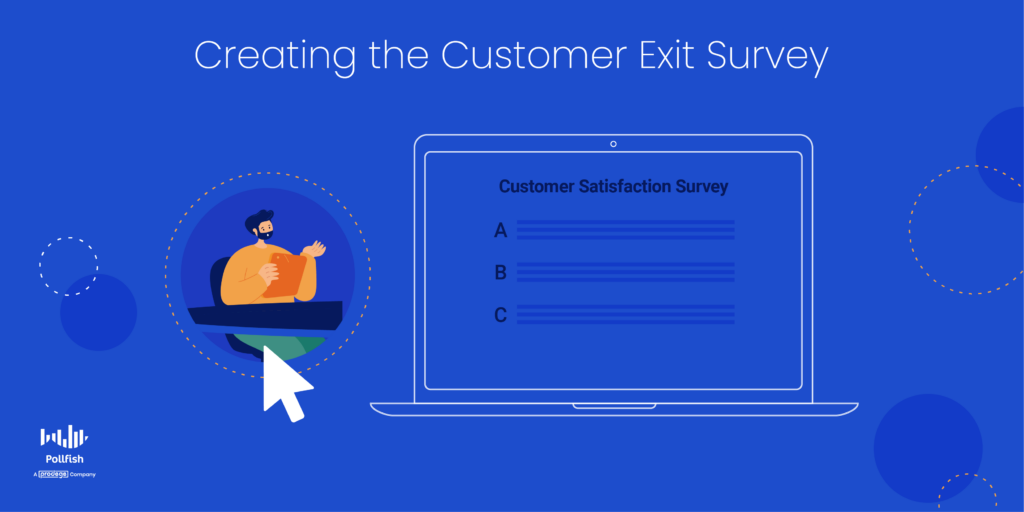
The following lays out the steps on how to create a customer exit survey:
- Apply consumer analysis on all areas where customers churn or are near churning.
- This involves consulting your website analytics and the host of your website marketplace.
- This also pertains to keeping track of in-store and online returns and complaints therein.
- Pay special attention to cancellations, a lack of renewals, little time spent using a product, returns and bounce rates.
- Use the results of previously conducted survey campaigns to discover whether your customers are dissatisfied with your brand.
- Refer to the aforementioned NPS and CES surveys.
- Conduct new surveys on customer satisfaction to catch the presence of unhappy customers or those who feel your brand is mediocre.
- Use the customer satisfaction survey to gauge levels of satisfaction.
- Use the customer experience survey to understand various moments in the CX.
- Use the customer retention survey to discover how to retain your customers.
- Analyze and consolidate the findings from your survey research and the presence of customer dissatisfaction and churn in your CX (from Step 1).
- Jot down all your findings and compare them across channels, purchase methods and the place of churn.
- Divide your findings into three sections:
- The most outstanding places of churn, including cancellations, discontinuation of renewal and returns.
- Churn on content and digital assets only.
- Considerations of churn (evidenced by poor survey scores, complaints, bad reviews, etc.)
- After dividing your findings into three sections, create survey campaigns centered on the topics in each section.
- This will organize your survey so that you don’t jam all topics into one, which will be irrelevant to all your customers, given they belong to a specific kind of section and therefore a specific customer exit.
- Begin your survey by targeting the correct respondents.
- Send your surveys via email or on a webpage.
- Also, consider setting up an automatic survey to signed-in users who bounce.
- Use a viable online survey platform, one that allows you to send surveys to specific individuals.
- Begin with a set of preliminary questions.
- Consider using a mix of open-ended and close-ended questions.
- You can use open-ended questions as follow-ups to close-ended questions, or as standalone questions.
- Optimize your survey for desktop and mobile.
- Your online survey platform should offer a mobile-first design, since mobile dominates the digital space.
- Consider adding A/B testing to test different versions of a product or subscription, along with those currently under development.
- Use multimedia elements to keep respondents engaged and see the product visually.
- Thank your customers for taking your survey.
- Analyze your findings and make necessary changes.
- Now that you have gathered data on customer exits, you should use all of it to analyze things such as:
- What irks your customers the most.
- What your customers wish your subscription, platform or product offered.
- What in the CX triggered customer dissatisfaction and exits.
- Make all the necessary changes.
- You’ll need to convene with your product designers, marketers, customer success and support teams to inform them of the necessary changes.
- You ought to share survey results to forge data democratization, which smooths the process of keeping everyone in the know and involved.
- Now that you have gathered data on customer exits, you should use all of it to analyze things such as:
- Tell your customers about the new changes you’ve made.
- This will show them you took their feedback into consideration and acted upon it.
- It will also directly prove that you’ve improved your product, support and other aspects of their CX.
- As such, it may revert them from canceling their subscriptions or make them renew.
- Additionally, it may attract them to buy from your business once again.
Keeping All Your Customers
The customer exit survey provides key insights that help you prevalent product and subscription cancellations, along with other kinds of customer attrition. In order to carry one out, you’ll need a quality online survey platform.
As such, you should use an online survey platform that makes it easy to create and deploy all kinds of surveys. It should offer random device engagement (RDE) sampling to reach customers in their natural digital environments, as opposed to pre-recruiting them.
Your online survey platform should also offer artificial intelligence and machine learning to remove low-quality data, disqualify low-quality data and offer a broad range of survey and question types.
The survey platform should offer advanced skip logic to route respondents to relevant follow-up questions based on their previous answers. It should also make it easy to form a customer journey survey to survey your respondents across their customer journeys.
Additionally, it should also allow you to survey anyone. As such, you’ll need a platform with a reach to millions of consumers, along with one that offers the Distribution Link feature. This feature will allow you to send your survey to specific customers, instead of only deploying them across a vast network.
With an online survey platform with all of these capabilities, you’ll be able to gain useful insights and avoid customer exits at all costs.
What to Expect and Look for in Survey Data Collection
What to Expect and Look for in Survey Data Collection
There’s far more involved in survey data collection than you may think. That’s because this data contains factors that go beyond mere questions and geographies.
But all survey data collection methods and their resultant data aren’t the same. They will differ based on the method you use to gather the data, along with your market research service provider.
There are lots of ways to go about this and thus, various types of survey data you can collect, depending on your approach.
93.4% of respondents will not give out their personal details in the surveys they take. While this may sound concerning, there are solutions to get around this, which, in turn, allows you to gain key details without violating respondents’ privacy.
This article delves into survey data collection, including its importance, popular collection methods and the actual data you should expect and look for in your research campaigns.
Understanding Survey Data Collection
Survey data collection refers to the practice of collecting various information about your target population through the use of survey research.
Survey data collection involves obtaining various kind of information from your target group: their opinions, sentiments, behaviors, needs, aversions and knowledge. In market research specifically, this data largely comes from your customers, or your target market — those most likely to buy from your business.
Survey data is defined as the resultant data you gather from a sample of respondents that took a survey. This respondent pool is called a survey sample. This data must exist as a fair representation of the opinions and perceptions of your audience.
This is possible to achieve if you use the proper method of collecting survey data. There are different methods and approaches to gathering this data.
You should opt for the method and provider that grants you the most timely and accurate results. Price and provider capabilities are also important considerations.
Survey data collection ought to be as comprehensive as possible about your target audience and also must be specific to the topics related to your research campaign.
Survey data collection can be applied in a vast number of industries and applications. It can be used within the following industries and for different purposes:
- Scientific research
- This includes performing experimental research.
- It also involves all fields of medicine.
- Politics and political polling
- Sports and sporting events
- Socioeconomic research
- Demographics research
- This includes censuses.
- Real estate research
This list is not exhaustive, as collecting survey data is useful for anyone who seeks answers from a target audience. However, survey data is most commonly used in market research and its various sub-practices.
Thus, any business can and should conduct market research and this is feasible using the market research survey and the myriads of other surveys.
Methods of Survey Data Collection
There are many methods used for survey data collection and its various ensuing analyses. Consider the efficacy and drawbacks of each method before you decide on the best for your research needs.
Some researchers prefer using multiple sources to gather their data collection.
While doing so may help you research certain demographics (e.g., elderly respondents who are more prone to responding to snail mail), it is best to opt for one robust survey data collection method.
That’s because survey data should not just be exhaustive, it should also be well-organized so you can draw accurate conclusions without referring to various sources and trying to make sense of them all.
Data collection involves the following methods:
- In-person interviews
- Businesses and other organizations can conduct in-person interviews with their target market to obtain the data they need. This often involves a pre-agreement to partake.
- Telephone surveys
- Like other surveys, telephone interviews can be conducted with the masses, but they have a major vulnerability: most people don’t want to spend their time taking a phone survey.
- These are also not ideal as they don’t provide as much anonymity as do other surveys, as the respondents’ voices, names and contact information is known.
- Mailed questionnaires
- These take the most time out of any method to get results.
- However, older demographics who spend less time digitally may be optimal for this kind of survey method.
- Focus groups
- A focus group is a small group of people selected based on shared characteristics to take part in a group discussion for market research.
- Syndicated research
- This kind of survey research involves relying on a research firm that conducts the surveys.
- The firm owns all the data and sells it to interested parties.
- Online surveys
- These can take many forms and have different methods of deployment.
- For example, in the Random Device Engagement (RDE) method, surveys are sent to a massive network of over 250 million+ websites and apps, prompting users that exist in their natural digital environments to take the surveys.
- You can also send surveys to specific people and through specific digital channels, like your homepage, landing pages, emails, newsletters, etc. This requires using the Distribution link feature.
The Importance of Survey Data Collection
A collection of survey data is extremely important for businesses that want to not merely survive, but remain competitive.
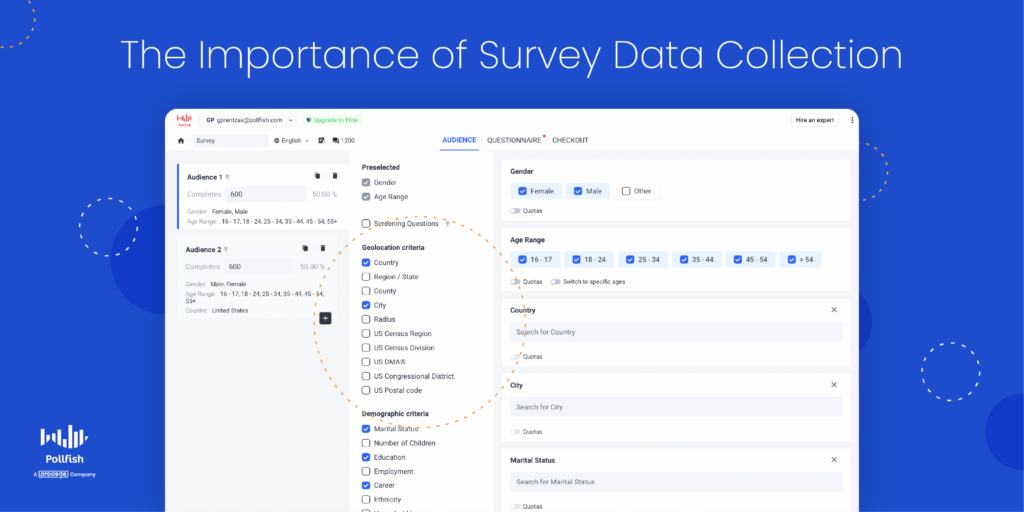
That’s because the data from surveys is used to form the basis of informed decision-making in different contexts. Everything from product development to product satisfaction, consumer needs and post-serivce sentiments about your brand can be studied through surveys.
This means you form a survey data collection at any part of your customers’ customer buying journey.
Whether your customers are just getting acquainted with your brand, have just made a purchase or are longtime buyers, gathering survey data will fortify all of your marketing and business campaigns.
As such, survey data won’t merely inform you on post-campaign activities. For example, you can conduct surveys for more than just asking respondents about their thoughts about a already launched product or an advertising campaign that’s already in effect.
Instead, you can survey your target market on their needs, problems and frustrations before you innovate your products or come up with an ad or marketing campaign. You can also survey them on current products in your industry and discover their weaknesses, allowing you to better innovate your own.
Because of this, a strong survey data collection will help you form or consolidate a marketing strategy or product idea. This essentially means that surveys help you throughout any stage of your business and, to reiterate, any point in the customer lifecycle.
Thus, surveys thoroughly serve your market research needs and can be used as the final (or beginning) touch to using any sort of behavioral data analytics. In fact, some of the most reknown companies of the world like Apple adn Verizon rely on a survey data collection.
Having a solid survey data collection is also important when it comes to making decisions — particularly, looking for answers. That’s why your collection should be well-organized. No matter how adept of a researcher you are, surely you won’t want to parse through mountains of onorganized or loosely related data.
That’s why we suggest forming your data collection via one source. This source should allow you to target anyone and gain granular insights.
A potent online survey platform can provide this, as it uses technology such as artificial intelligence and machine learning to remove low-quality data, provide a broad range of survey and question types and can fully customize your surveys.
The Actual Data You Should Expect and Look for
Collecting survey data is far more than just creating questionnaires and gathering them. Instead, there is particular data you ought to expect from your survey provider.
Here is what you should keep your eyes peeled for to create a well-built survey data collection:
- The ability to opt-in only the respondents you need for your survey campaign.
- This should include a screening section, allowing you to ask screening questions and target respondents as granularly as possible.
- Set quotas so that your survey gets the number of respondents you desire.
- This is not just for preferential reasons, but to reduce biases like the margin of error and sampling errors from your research.
- Create multiple audiences per survey or survey campaign.
- Some providers, like Pollfish, allow you to create separate audiences in one survey and achieve any targeting combination you like.
- This feature allows researchers to create quotas within quotas and set multiple conditions for granular targeting.
- Having various types of survey questions on hand to enrich your campaign and data collection.
- Have a wide range of survey templates as you prepare a survey.
- Route respondents to certain questions based on their answer to a previous question.
- This can be done via advanced skip logic, which automatically directs respondents to relevant follow-up questions based on a previous answer tey provided.
- The ability to filter data.

- This includes data at the questionnaire level and results section (a dashboard in a survey platform).
- On the survey results dashboard, you should be able to filter data based on demographic and location information. For example, you should be able to filter data by gender, age, location, and any other targetting you set to understand how each demographic group answers your questions.
- Various ways to view and organize your data:
- The ability to see and analyze your survey data as you please is crucial to you and your team, as no one works in the same way.
- As such, you should be able to view your survey data collection in various formats:
- Charts
- Graphs
- Tables
- This involves having access to different visualizations of both the questionnaire (survey answer) data and the respondent data.
- Various access points to your data via exports:
- PDF: A visual document that can easily be shared with stakeholders and saved as reference docs. A Pollfish PDF is laid out similarly to a PowerPoint presentation.
- Excel Spreadsheet: Recognizable to most businesses, with a Pollfish spreadsheet export, researchers have full access to all Pollfish survey results. They can add pivot tables, graphs and get deeper insights.
- Crosstabs Report: Crosstabs are a matrix-style data visualization format for analyzing data. This report allows researchers to look into individual insights and organize their data in different ways, opening different consumer insights that wouldn’t be readily available from the initial results.
- SPSS Report: This allows you to add your Pollfish results to various kinds of complex data analyses. Ideal for combining varied, complex data sets, researchers use it to make connections, find correlations and graph results from various data exports at once.
- CSV file: A Comma Separated Values file is a plain text file containing a list of data. This kind of file is often used to exchange data between different applications.
- Pause, stop and change your survey while it is still running.
- This can only be done via a digital means, such as an online survey platform.
- You should be able to alter your survey to get only the most relevant and necessary information.
- A strong platform will allow you to pause and alter your survey before it reaches all quotas. This way, you can modify the targeting or the questionnaire itself.
Build the Best Market Research Campaigns
The Pollfish team is constantly making upgrades to our online survey platform to provide you with a comprehensive market research experience.
Our survey software allows you to establish a thorough survey data collection, one you can customize to your liking, view however you please and organize to the max.
In addition, with our vast array of question types, you can create any survey type to aid any research campaign.
Our survey platform is optimized for both the respondent and the researcher. Thus, it is a win for all parties involved.
Researchers can reap a wide breadth of information on their respondents and access a wide pool of insights in their survey results dashboard.
In addition, there’s the advanced skip logic feature, which routes respondents to relevant follow-up questions based on their previous answers.
With a research platform containing all of these capabilities, you’ll constantly have a strong survey data collection on hand, there for you for all your business ventures.
Fully Understanding Your Consumers with a Target Market Analysis
Fully Understanding Your Consumers with a Target Market Analysis
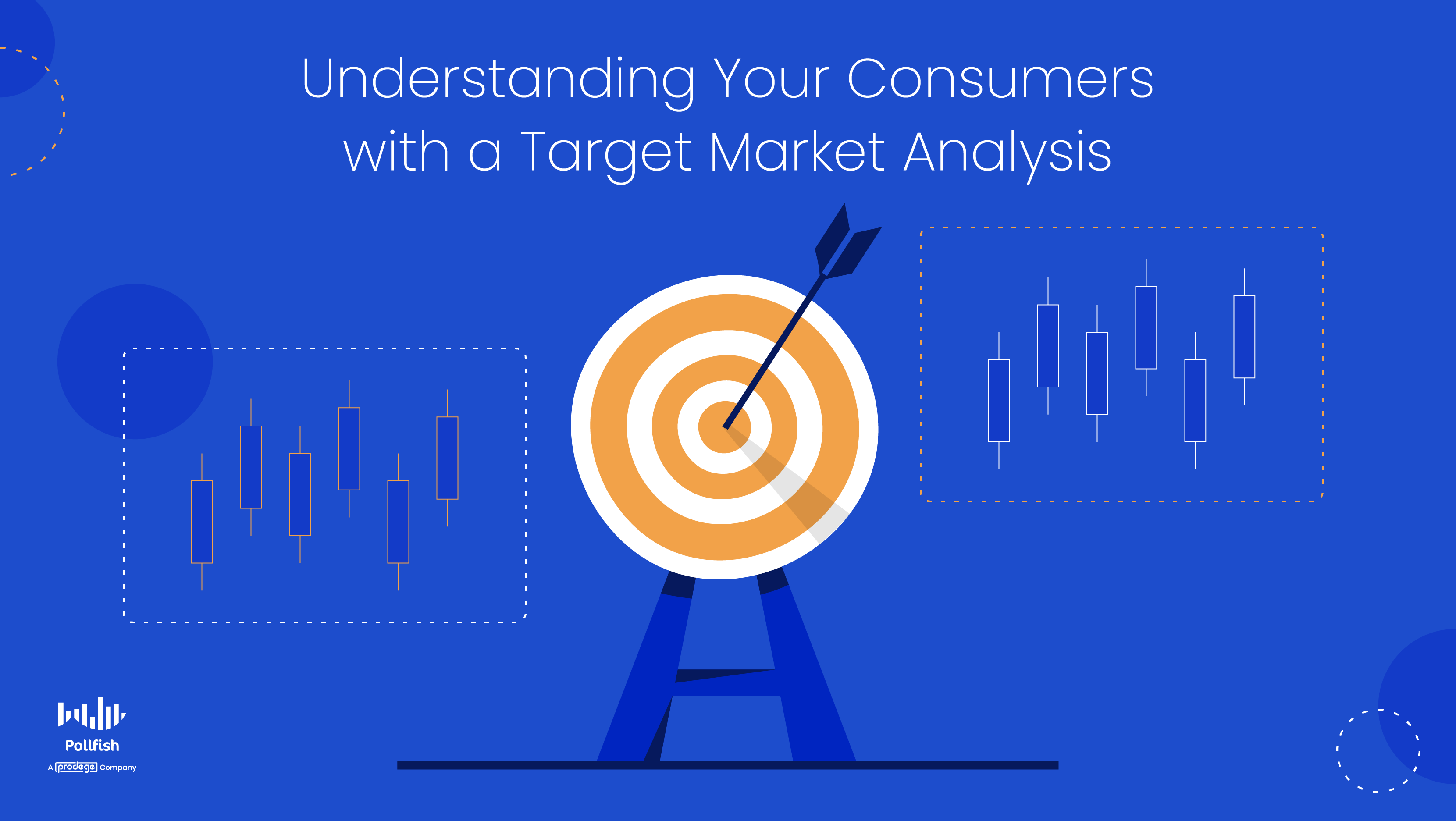
Conducting a target market analysis is central to market research, as it enables you to understand your consumers in-depth and in relation to the viability of your products and services.
A vague or unproven idea of your target market — the group of customers most likely to patronize your business — will have damaging consequences for your business. This is because you can’t be all things to all people; even your competitors’ target market isn’t the exact same as yours.
Analyzing your consumers will help your business reach the right audience, along with a slew of other benefits. In fact, by segmenting your consumers through a target market analysis, you can increase profits by 80%.
This article examines the practice of the target market analysis, its importance, when to use it and how to create it using market research software.
Understanding the Target Market Analysis
A target market analysis is more than simply a study of your potential customers.
A target market analysis is a comprehensive assessment of your target market, the core base of customers most inclined to buy your product or service. One of several market research techniques, this kind of analysis is exhaustive in that it doesn’t merely examine customers.
Instead, this method involves assessing how your offerings will fit with a specific market and how they will achieve the most traction with your target customers. As such, a target market analysis defines where and how your product belongs in the real-life market.
Given that a target market analysis grants a high-level perspective of your market, you can use it to outline the opportunities and restraining factors that exist in your market.
Being able to create a market analysis will enable you to comprehend who to market and sell to along with how to satisfy your consumer preferences. As such, a target market analysis will help you reach your customers and provide them with a solution tailored to their specific needs or concerns.
When you conduct your target market analysis, you’ll need to consolidate your previously conducted demographic analysis with a psychographic analysis. These two kinds of analyses provide detailed information on the makeup of your target market, from their quantitative information, such as their age, gender, location, education and other such categories, to the psychological underpinnings of their buying habits and needs.
As such, this analysis requires merging both analyses, along with analyzing your own offerings and the problems they can solve for your target market.
The Importance of a Target Market Analysis
A target market analysis is critical to your organization for a number of reasons.
First off, businesses don't have the time or resources to serve or reach everyone with a product offering and message. By analyzing a target market, you can focus on the correct audience, the kind most likely to need, want and purchase your product or service.
As such, you can work on campaigns directed at customers with the highest profit potential, or at least those who will purchase from you every now and again.
Furthermore, this analysis also helps you determine the least valuable target markets, so you can know which customers are worth pursuing and which are worth avoiding.
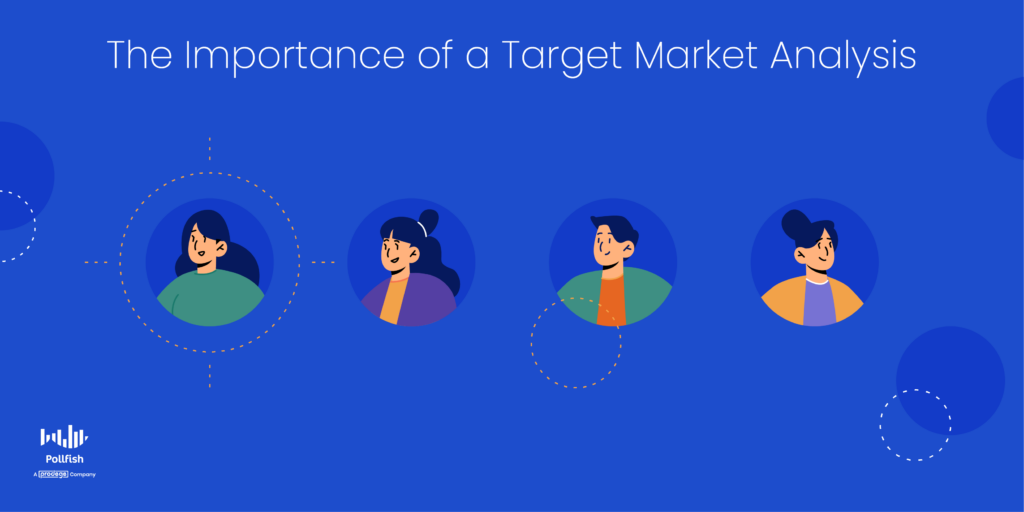
As such, this intelligence permits you to limit the populations you market to and serve. By limiting those populations, you will improve how you allocate funds to your market research budget and other business budgets. Thus, a target market analysis saves you time, money and other resources by informing you of the most beneficial means of funneling them.
Conducting a target market analysis also enables you to develop customer personas. These are highly defined and granular representations of particular individuals in your target market. They offer a hyper-specific form of the groups in your target market, which you would identify via market segmentation.
Understanding your customer personas allows you to understand your ideal customers more accurately and how to forge marketing personalization for them more effectively. Personalization is a crucial marketing strategy, as no one wants to feel marketed to, especially with mundane and generic messaging. In fact, 99% of marketers say personalization advances customer relationships and 80% of consumers are more likely to buy when brands offer personalized experiences.
In addition, a target market analysis helps you understand the viability of your products and services in relation to your target market. As such, you can use it to discover gaps in the market that your organization can fill. In this way, this analysis helps you work on product innovation and augmenting your customer experience.
This is because feedback from your target market helps you evaluate how successful your existing or new products will be, along with other insights on your CX.
This kind of analysis also unearths new target customers that are interested in your offerings, groups you previously may have been unaware of.
Finally, you can leverage your target market analysis to find the best marketing channels to use. This is important as various market segments use and respond differently to social media platforms. Some may forgo using a certain platform entirely, while others may get all their information from one social media platform.
All in all, analyzing your target market brings various benefits for your business, whether you’re a startup or a long-standing business.
When to Use a Target Market Analysis
There are several key times you should conduct and parse through a target market analysis. These will vary depending on the duration of your business, the particular campaign you set to work on, or one that is in the works, along with various other factors unique to your business.
The following lists some of the most opportune times to complete a target market analysis:
- When venturing into how to do market research for a business plan.
- During the early stages of a business.
- During certain stages of the strategic planning process that require more consumer insights.
- Before beginning a marketing, advertising, branding or other business campaigns.
- This is especially important, as money, time and creativity are often spent on these undertakings.
- During any major campaign, it is critical to be targeting the correct audience.
- If you seek to discover other customer segments and personas that may be interested in your product or service.
- When you need ideas on how to make product improvements and updates.
- This involves getting rid of bugs and glitches, along with optimizing the user experience of your products.
- If you seek to improve your digital experience or obtain feedback on it from all your market segments.
- This helps inform your content marketing strategy.
- During concept testing and A/B testing, to put customer opinions into perspective by understanding the preferences of all market segments.
How to Create a Target Market Analysis
You’ll need to consolidate several documents to run a comprehensive target market analysis. This will ensure you’re not missing any key insights about your customers and your product or service’s use to them.
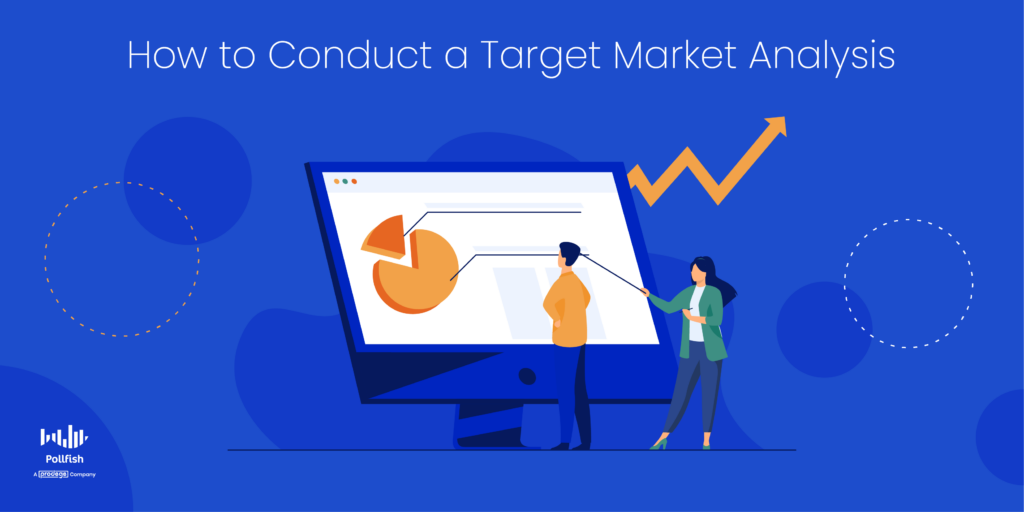
The following provides step-by-step instructions for creating a target market analysis:
- First, decide the purpose of your analysis by using the previous section to guide you.
- There are various other instances that may require putting together this analysis, regardless of whether its purpose is mentioned in the prior section or not.
- Next, consolidate your demographic and psychographic analyses of your target market.
- These analyses have critical customer information that you’ll need to use in your target market analysis.
- Combine your findings by adding the psychographic information to the demographical information.
- For example, let’s say one of your segments is men and women in their mid-forties to early fifties. Add their behavioral, lifestyle and psychological factors you’ve uncovered in your psychographic analysis.
- Should you require more information, conduct secondary market research by observing resources relevant to your industry, such as:
- news sites
- blogs
- trade magazines
- Google Trends
- public resources, such as the US Census Bureau.
- Next, conduct primary market research with a market research platform.
- Use an online survey platform, ideally one that allows you to conduct quantitative market research and qualitative market research.
- Use this step to fill in the gaps from your existing analyses, or to start from scratch if need be.
- Come up with preliminary questions relevant to the purpose of your target market analysis.
- For example, if you seek to launch a new ad campaign, consider creating questions that relate to it.
- Then, create questions specific to customers’ problems and needs, especially ones that your product or service is made for.
- Consider asking questions about your competitors to gain an understanding of what is missing in your market, along with what your customers find favorable.
- Also, consider running a brand tracking survey to gain intelligence about how your brand is perceived and whether or not your potential customers know about it to begin with.
- Continue creating surveys and iterating as needed.
- Don’t stop until your customer profiles are complete.
- Also, continue studying your target market until you understand its demand and the reputation of your business and competitors.
- Put together all your findings and analyze them.
- Use the dashboard of the online survey platform to visualize your data in various ways.
- Share your analysis with your team members.
- You’ll need to use a platform that makes it easy for anyone to use the platform; your online survey platform should offer data democratization.
- This way, it can easily be shared, reviewed and analyzed across teams.
- Take action.
- Now that you understand your target market, including its members and their customer behavior, habits and more, along with the viability of your products, you can plan on how to move forward.
- Use the insights you’ve gained to plan your campaigns.
- First, decide the purpose of your analysis by using the previous section to guide you.
Targeting Your Most Valuable Consumers
A target market analysis is a deep-dive investigation into your customers’ statistical makeup, problems, needs, behaviors and preferences. By forming this analysis, you’ll have a deep understanding of what makes your customers tick and how your business can appeal to them.
To conduct this analysis, you’ll need a strong online survey platform to carry out your market research and present it in a way that’s most convenient for you.
You should therefore use an online survey platform that makes it easy to create and deploy consumer surveys. It should offer random device engagement (RDE) sampling to reach customers in their natural digital environments, as opposed to pre-recruiting them.
You should also use a mobile-first platform since mobile dominates the digital space and no one wants to take surveys in a mobile environment that’s not adept for mobile devices.
Your online survey platform should also offer artificial intelligence and machine learning to disqualify low-quality data and offer a broad range of survey and question types.
The survey platform should offer advanced skip logic to route respondents to relevant follow-up questions based on their previous answers. It should also make it easy to form a customer journey survey to survey your respondents across their customer journeys.
Additionally, it should also allow you to survey anyone. As such, you’ll need a platform with a reach to millions of consumers, along with one that offers the Distribution Link feature. This feature will allow you to send your survey to specific customers, instead of only deploying them across a vast network.
With an online survey platform that offers all of these capabilities, you’ll be able to carry out a quick and useful target market analysis.
Create an Advanced Research Experience with Passthrough Parameters & Other URL Parameters
Create an Advanced Research Experience with Passthrough Parameters & Other URL Parameters
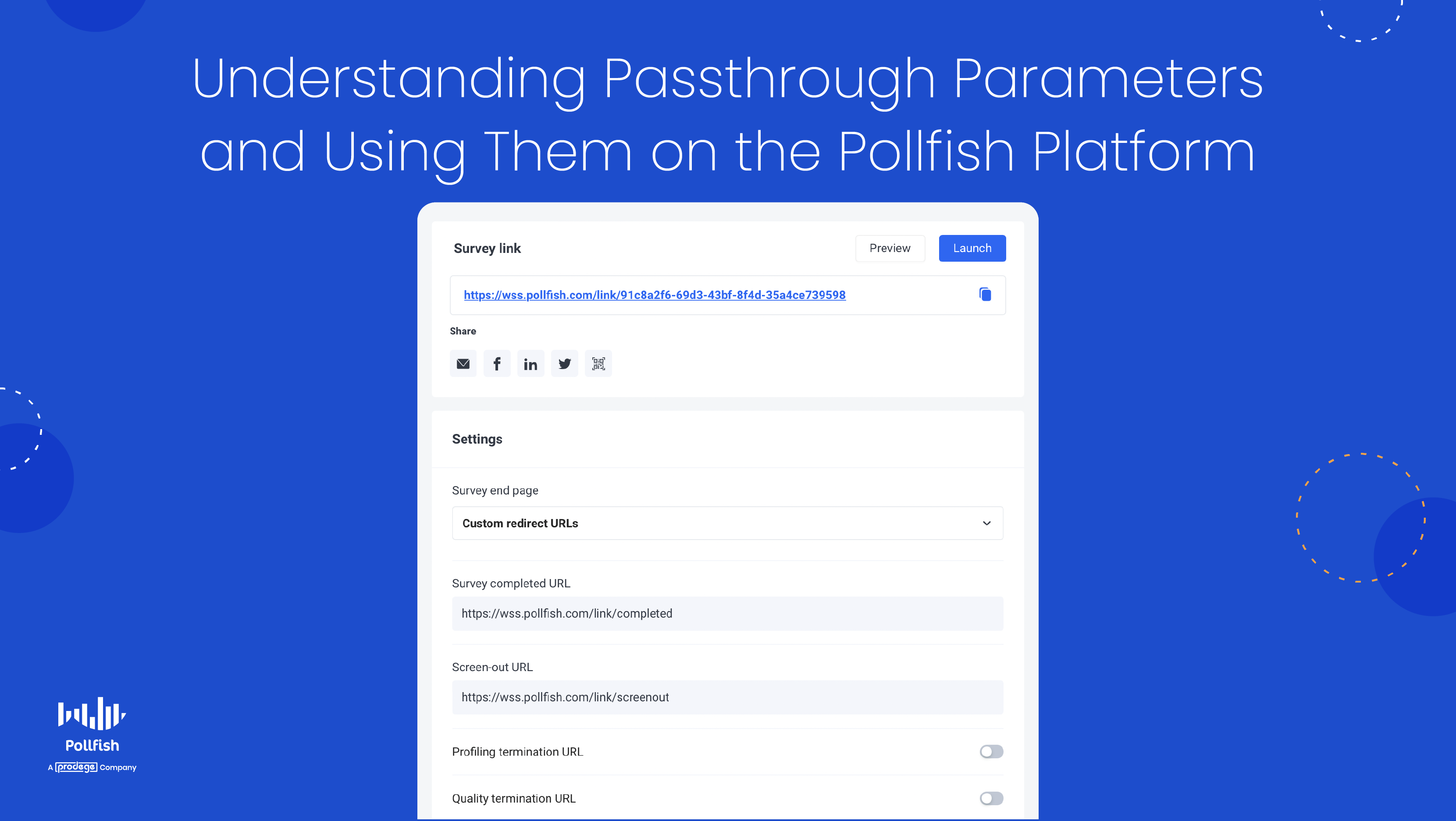
Learn how to pass and capture more information by using parameters - or “params” for sort - on our DIY survey platform
Our URL feature allows you to add passthrough parameters, also called URL parameters, along with offering redirect parameters to your survey.
These help you to append information to your respondents, as you can use params to track them and then lead them to a particular response. As such, this technical feature helps you better acquaint yourself with your target market.
This article explains these parameters, their use cases and how they work in the Pollfish online survey platform; it also provides examples.
Understanding Passthrough Parameters
Pass-through parameters are specific tags that are placed at the end of a URL. They send data to a server and creating them is optional.
These parameters are part of a URL’s query string and thus are part of the URL-forming process. They can be seen by respondents, as they appear in the URL.
You can append as many parameters as you want to your survey link.
How Passthrough Parameters are Used
They are predominantly used to track and match a respondent with a certain response. In Pollfish, you append the user ID at the entry URL and retrieve it at the redirect URL.
By doing so, you can match a respondent profile from the Pollfish respondent pool with a response on a Distribution Link survey. This is the opposite of what you would do with third-party surveys, which are the surveys that get deployed through our massive networks via our Random Device Engagement method (RDE).
Other Uses of URL Parameters
This new offering has various other use cases for your market research needs. These include technical uses and research-based ones, that is, those that focus on understanding your respondents.
Here are other uses of passthrough/URL parameters:
- Passing along demographic data, storing it and later analyzing the results with ease..
- Passing, tracking and monitoring campaign IDs.
- Inviting and tracking respondents via email
- Segmenting your audience for market segmentation
Examples of Passthrough Parameters
The following shows you how passthrough parameters appear on your Pollfish surveys. Take a look to see their components and properties and how to add them to your own survey link.
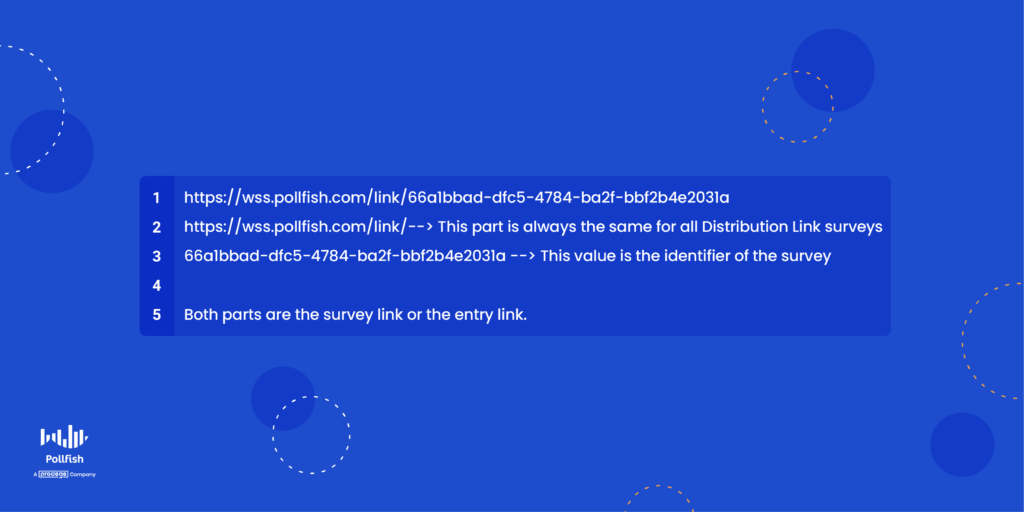
Add some more:
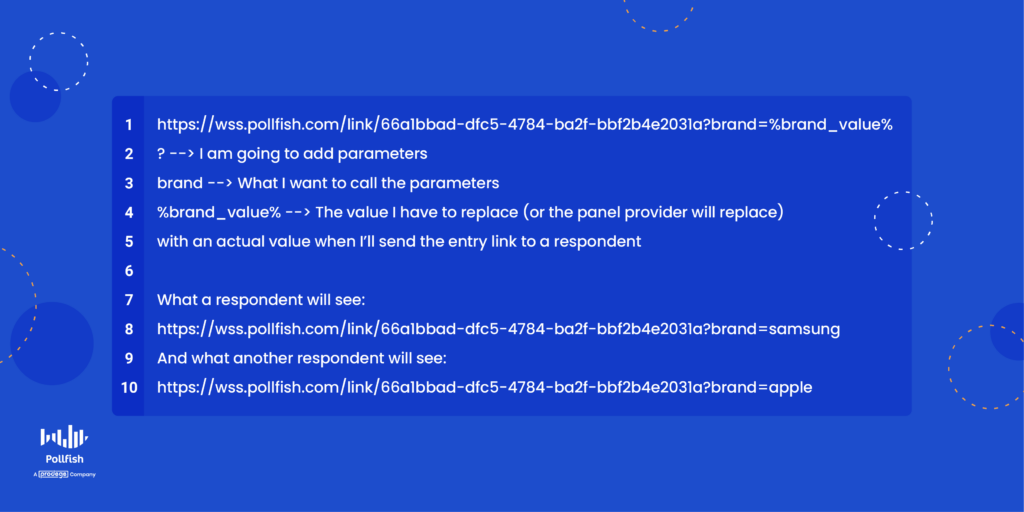
Add even more:
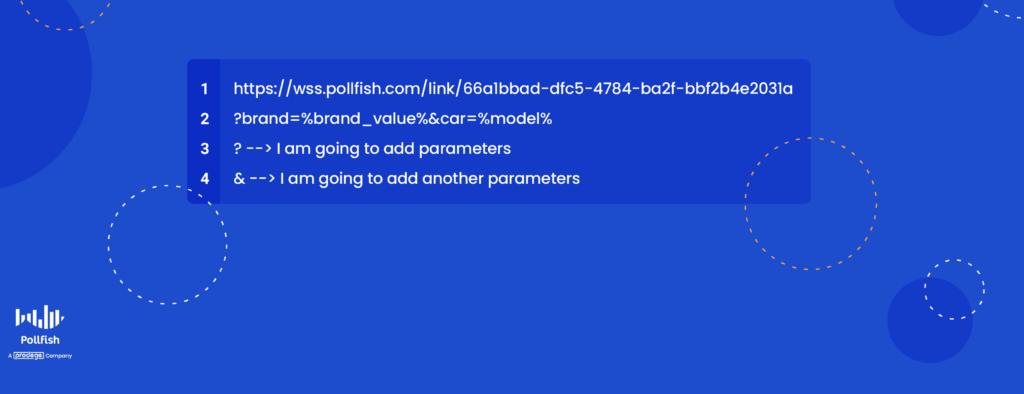
Retrieve them with redirect params:
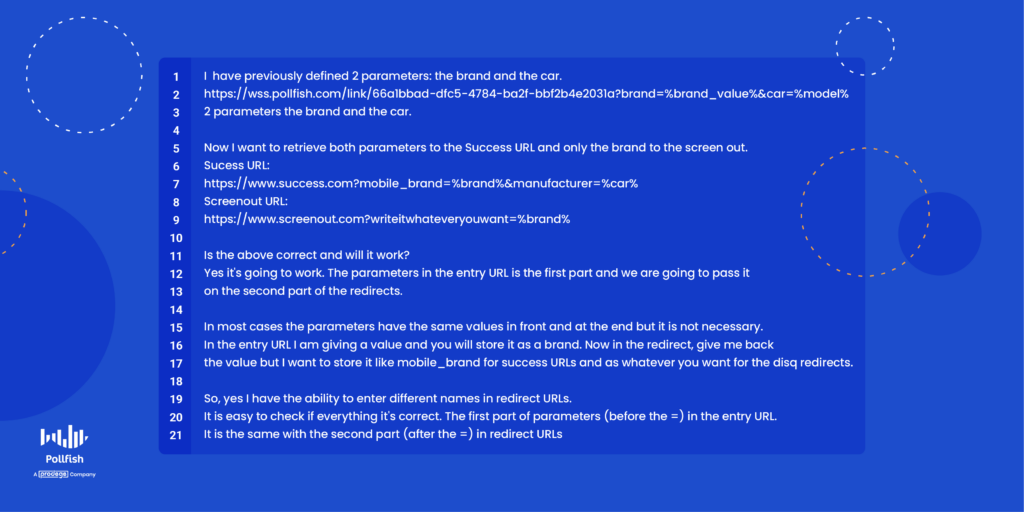
Redirect Parameters
You can retrieve your passthrough parameters through redirect parameters, which are also part of a URL. The value in your destination URL affects where and how the URL is redirected.
Building Passthrough Parameters on Pollfish
Params order and letters case doesn’t matter! You can define a parameter at the end of an entry URL by adding first the ? and then the parameter. For example:
Entry URL:
https://wss.pollfish.com/link/12345678-1234-1234-abc123456?userid=%userid%
You can append another parameter by tying them with the “&” sign. For example:
https://wss.pollfish.com/link/12345678-1234-1234-abc123456?userid=%userid%&campaign_id=%campaign_id%
Retrieving parameters through redirect URLs
In case you want to pass through the information with redirect URLs then you have to include the same parameters at the redirect URLs. For example:
Survey with a completed URL:
https://thirdpartyswlink.com?user=%userid%&campaign=%campaign_id%
An easy way to check the validity of your parameters is that the parameter name in entry url is the same with the value between the % symbols at the redirect URLs. For example:
Entry URL: https://wss.pollfish.com/link/12345678-1234-1234-abc123456?user_id=%respondentid%
Survey with completed URL:
https://thirdpartyswlink.com?respondent=%user_id%
Export the stored data.
All parameters and their saved values for each respondent are available at XLS export, sheet individuals.
Will the following work?
A third party software defines parameters $param$ or [param] or [[param]].
It will not. Try to replace all other symbols with the percentage symbol (%).
Creating the Best Survey Experience
While this topic hinges on the technical side of the market research process, the Pollfish platform is otherwise extremely user-friendly and easy to navigate.
You should therefore opt for a research platform like Pollfish, which also grants artificial intelligence and machine learning to remove low-quality data and a broad range of survey and question types to customize your surveys.
It also features advanced skip logic to route respondents to relevant follow-up questions based on their previous answers.
Pollfish puts you in full control of your survey campaign — from targeting, to deployment method, to the questionnaire and how your post-survey data is presented.
With a research platform containing all of these capabilities, you’ll be able to set up research campaigns your way and retrieve quality data.
Implementing a Psychographic Analysis to Fully Understand Your Customers
Implementing a Psychographic Analysis to Fully Understand Your Customers
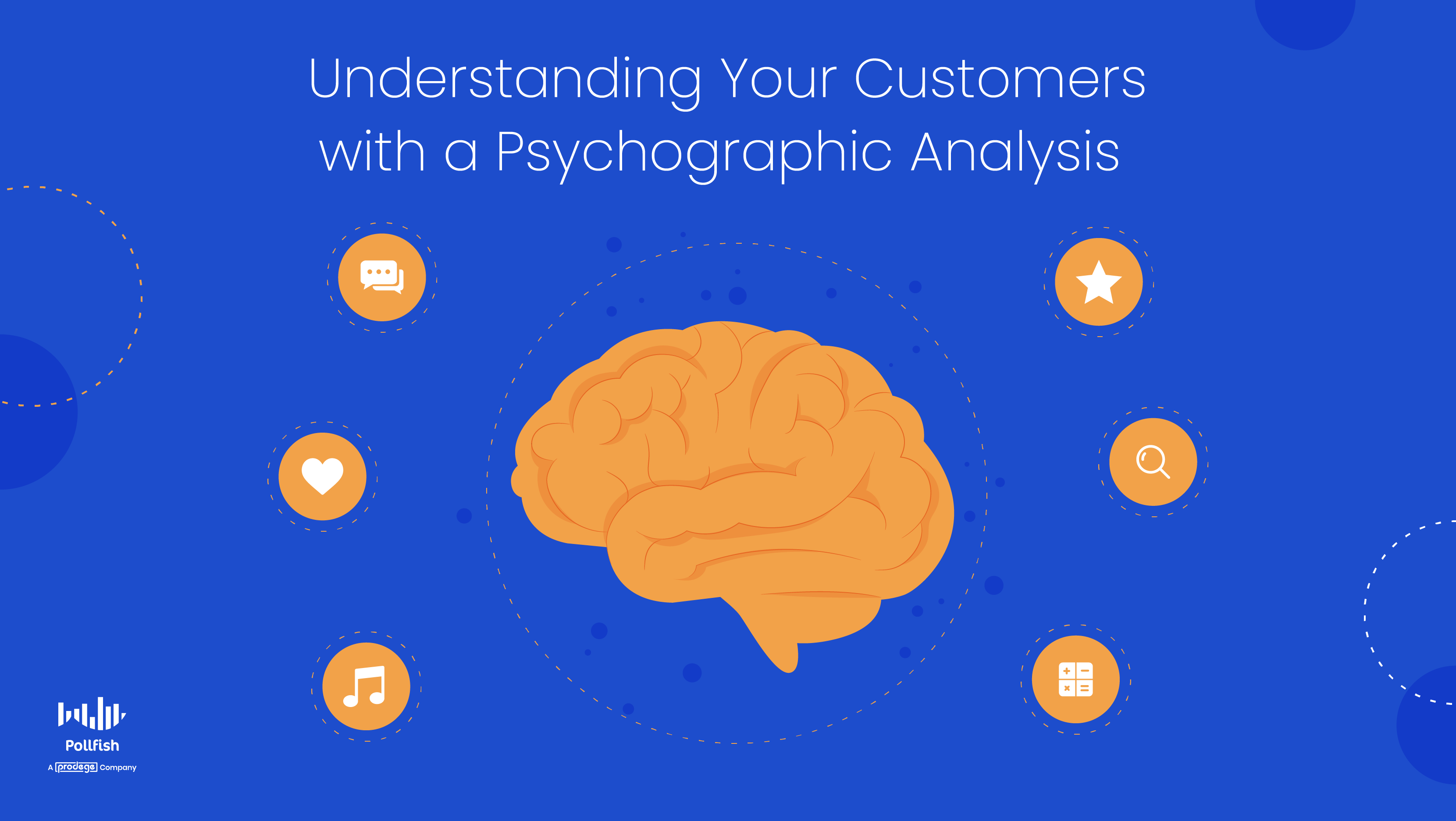
In order to understand your target market, you’ll need to conduct a psychographic analysis, a critical kind of consumer analysis that logically follows a demographic analysis. Consolidating both of these forms of analyses allows you to paint an accurate picture of the customers most likely to buy from you — aka, your target market.
76% of customers expect companies to understand their needs. It is therefore critical to analyze your customers’ psychographics, as psychographics aims to understand the cognitive factors that drive consumer behaviors. As such, this kind of analysis allows you to understand the core of your customers’ psyche, making it easier to serve them and meet their needs.
To further prove the importance of understanding your customers, consider this: customer-centric companies are 60% more profitable compared to companies that aren’t. All businesses should study their customers' psychographics.
This article explains the psychographic analysis in full detail, including its importance, makeup, how to collect psychographic data and how to conduct this kind of analysis.
Understanding the Psychographic Analysis
A psychographic analysis is a kind of customer analysis that involves examining psychological and emotional motivations in order to provide more relevant offers and messaging to the customers.
This kind of analysis is performed to complete a target market analysis, which is a comprehensive analysis of the consumers most likely to buy from you.
A psychographic analysis must follow a demographic analysis, which organizes customers via basic, quantitative information, such as age, gender, occupation, etc. Studying psychographics allows you to understand how demographics relevant to your brand think and behave.
While demographics deal with a specific segment of the population, thereby answering the “who” and “what,” psychographics deal with the motivational factors that influence customer buying behavior. As such, a psychographic analysis provides the “why” behind purchasing behaviors.
The following lists all the factors involved in a psychographic analysis:
- Consumer activities
- Interests
- Goals
- Values
- Belief systems
- Attitudes
- Opinions
- Aversions
- Emotional responses
- Morals and ethics
- Biases and prejudices
- Tendencies and habits
- Hopes
- Thoughts
- Fears
- Lifestyles
Given that psychological and behavioral factors tend to intertwine, this kind of analysis includes both. Additionally, they both hold sway on how, what and how many times customers buy.
As such, this kind of analysis also supports the RFM analysis. An abbreviation for recency, frequency and monetary value, this analysis is used to estimate the value of a customer based on the three data points in its abbreviated title.
Finally, a psychographic analysis allows you to create detailed customer profiles. As such, aside from learning the demographic makeup of your customers, you’ll begin to understand why they buy and behave in certain ways.
How to Collect Psychographic Information
There are various means you can use to collect psychographic information. These involve taking part in secondary and primary research.
The following lays out the different ways you can collect psychographic information:
- One-on-one interviews
- The most traditional route.
- This often involves pre-recruiting participants.
- It can also consist of random cold calling.
- Focus group
- A small group of people selected based on shared characteristics to take part in a discussion for the purposes of market research.
- A moderator conducts a discussion where every member participates at their own will.
- This can be biased, as submissive participants will keep quiet, while extroverted, dominant participants will offer more.
- Website analytics
- This includes internal site analytics.
- Examples include those involved from a web host, such as WordPress.
- It can also include Google Analytics, which displays various site activities.
- Third-party analytics providers
- UX analytics providers
- They often provide capabilities beyond traditional metrics such as traffic and bounce rate.
- Ex: Adobe Analytics
- Psycholinguistic
- This refers to investigating the psychological processes involved in the use of language.
- In market research, it involves understanding customer jargon and slang.
- It deals with the perception, production, and acquisition of language.
- Browsing Data
- This involves examining how customers browse your site.
- It includes studying the time spent on a page, etc.
- It often involves using site cookies, which allow you to monitor customers and remember certain information about them.
- Social media behavior
- This includes likes, shares, clicks, tweets, posts.
- It also involves using social listening to understand when customers mention your brand, niche or competitors.
- Reviews on social media sites provide insight into customers’ attitudes and opinions.
- Syndicated research
- This research is conducted independently, published and sold by a market research firm.
- The firm is industry-specific and funded by several companies in a particular industry.
- It doesn’t allow you to gain full control of your market research study, as the firm dictates the study and owns the data.
- Survey panels
- This research method collects data from a group of pre-recruited and pre-screened respondents.
- A group of panelists takes part in research sessions over a given period of time.
- This is ideal for longitudinal studies, as you can work with the same set of panelists continuously.
- Online survey tools
- This involves market research platforms that allow you to create, distribute and analyze surveys online.
- They put you in full control of your survey study.
- They eliminate bias via quality checks, such as banning VPN users, removing gibberish answers, etc.
The Importance of a Psychographic Analysis
This kind of analysis is essential for various reasons.
A psychographic analysis allows you to complete the customer profile you’ve begun compiling during a demographic analysis. It scopes out the psychological and behavioral factors behind the demographics.
As such, you won’t merely understand who is in your target market, but their mindsets, what they do and why they act in particular manners, putting their customer behavior into perspective.
Through this analysis, you’ll be able to unearth who would be most receptive to your company’s offering.
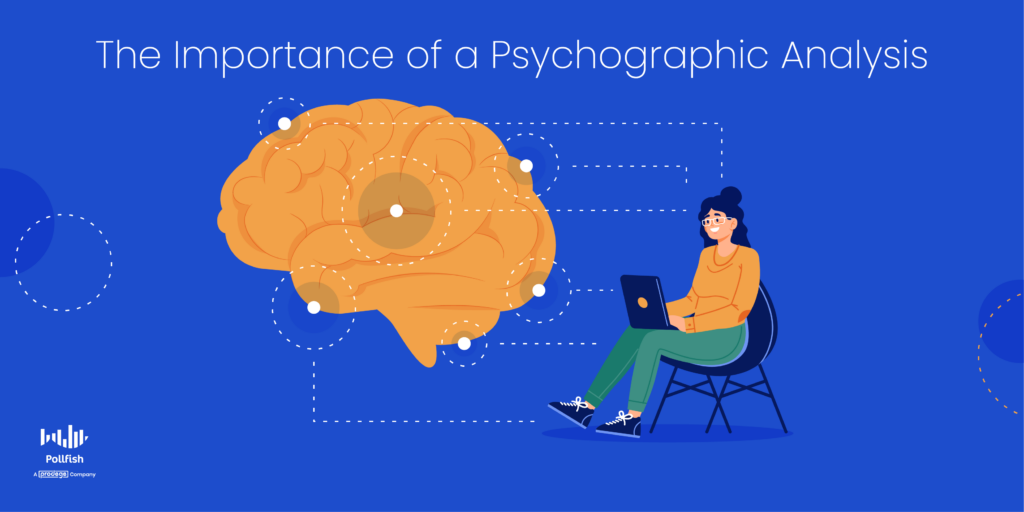
By understanding why a consumer might buy your product or service, you’ll be able to efficiently create marketing campaigns that appeal to them specifically. For example, some consumers may find it difficult to make healthier lifestyle choices. Through a psychographic analysis, you can discover the psychological nuances that drive this difficulty.
You can then use those insights to appeal to these consumers, by positioning your brand as one that understands the hardships of living a healthy lifestyle and offers simple solutions, ie, your products and services.
With the correct psychographic information in tow, you can then create marketing campaigns with the most relevant customer testimonials, content and messaging. You can also use the insights you gathered from this kind of analysis to adjust sales campaigns, such as creating the correct promotions and incentives that spur customers into buying from you.
Aside from setting up the proper campaigns and serving your customers in their favor, a psychographic analysis allows you to influence consumer behavior. This involves being able to tap into your consumers’ values and what they hold important, along with using effective emotional marketing.
For example, some customers value green initiatives and sustainability. They are thus most inclined to buy from green, sustainable brands. Other customers may have an emotional connection with a particular charity, and thus will be more willing to buy from a business that supports this charity, a similar one or champions its cause.
All in all, all businesses need to understand what motivates their consumers. A psychographic analysis will humanize the raw and statistical data that brands derive from a demographic analysis.
That’s because psychographics refines dry data by painting a picture of who your shoppers are aside from their quantitative traits, allowing brands to know them on a far more personal and intimate level.
How to Form a Psychographic Analysis
Creating a psychographic analysis requires conducting both primary and secondary market research. Unlike in a demographic analysis, studying customers’ psychographics requires conducting qualitative market research.
You’ll need to apply this approach to every step in the process, including when you contextualize your demographic analysis — this is a major part of forming a psychographic analysis, as the psychographic portion is meant to delve into the psychological factors of a company’s key demographic targets.

The following lays out how to conduct a psychographic analysis:
- Begin by drawing up your findings from your demographic analysis.
- Consult the different segments you’ve discovered from the secondary and primary research you conducted in your demographic analysis.
- Next, perform secondary research; use the current market segment insights you have and dig further by using all kinds of secondary sources. These include:
- Government websites
- Market research sites with publicly available data.
- Trade magazines
- Blogs
- News sites
- Websites dedicated to CX and consumers
- Niche sites that discuss consumers in your industry
- Add the information you’ve discovered in the demographic profiles you’ve created.
- For example: do men between the ages of 20-35 tend to make hasty purchases? Or perhaps they’re more likely to buy the latest version of electronics?
- Run a primary market research campaign.
- Use the profiles you created in the previous step to brainstorm your most pressing psychographic questions.
- To better understand each demographic segment you highlighted, conduct a survey with multiple audiences. Alternatively, conduct several surveys on each demographic group. (The former is more efficient; you’ll need an online survey platform that provides this).
- Consider dividing your surveys and question types by the following broad topics, which include corresponding sub-topics. Since it is best to keep surveys short as a best practice, it is ideal to create multiple surveys. First, divide them into the following:
- Emotional response
- To understand consumer: feelings, aversions, desires, fears, emotional connections and sensitivities
- Consumer activities
- To understand consumer: habits, spending patterns, purchasing pains, frequency of purchases, lifestyles
- Interests
- To understand consumer: lifestyles, habits, curiosities, needs, biases, likes, tendencies
- Goals
- To understand consumer: needs, aspirations, how they seek to remove pain points
- Values
- To understand consumer: belief systems, moral and ethics, biases and prejudices,
- Opinions
- To understand consumer: attitudes, hopes, perceptions of your brand and others and lastly, their thought
- Emotional response
- Conduct follow-up surveys and/or questions, if need be.
- Use a survey platform that offers advanced skip logic, if you opt for the latter. This is because this functionality routes users to specific follow-up questions, based on how they answered a previous question.
- Analyze your findings.
- Use your market research platform’s dashboard to visualize and make sense of your data.
- Form concrete customer segments and personas from your psychographic survey findings and analysis.
- Take action.
- Use the findings from your psychographic analysis to take a wide range of actions, such as establishing new marketing campaigns, tweaking existing campaigns, innovating on products, improving customer service and more.
- Conduct regular surveys of your target market sample to continuously stay in the know about their feelings, opinions and all else that their psychographics include.
Delving into the Minds of Your Customers
A psychographic profile enables you to know how your ideal customers think, feel, behave, value and much more. This kind of customer intelligence is vital, as it not only paints a clear picture of your target market, but it also allows you to understand your customers’ buying decisions and behaviors.
This could mean the difference between earning, retaining or losing customers. As such, you should conduct a psychogrpahic analysis of your customers to understand what makes them tick, how they respond emotionally, how their values shape their buying behavior and much more.
To do so, you’ll need to use a quality online survey platform. You should use an online survey platform that makes it easy to create and deploy all kinds of surveys.
It should extend random device engagement (RDE) sampling so that you can reach customers in their natural digital environments, as opposed to pre-recruiting them.
Your online survey platform should also offer artificial intelligence and machine learning to remove low-quality data and offer a broad range of survey and question types.
Additionally, it should also allow you to survey anyone. As such, you’ll need a platform with a reach to millions of consumers, along with one that offers the Distribution Link feature. This feature will allow you to send your survey to specific customers, instead of only deploying them across a vast network.
With an online survey platform with all of these capabilities, you’ll be able to properly conduct an informative psychographic analysis.
Forming a Demographic Analysis to Complete Your Market Research
Forming a Demographic Analysis to Complete Your Market Research
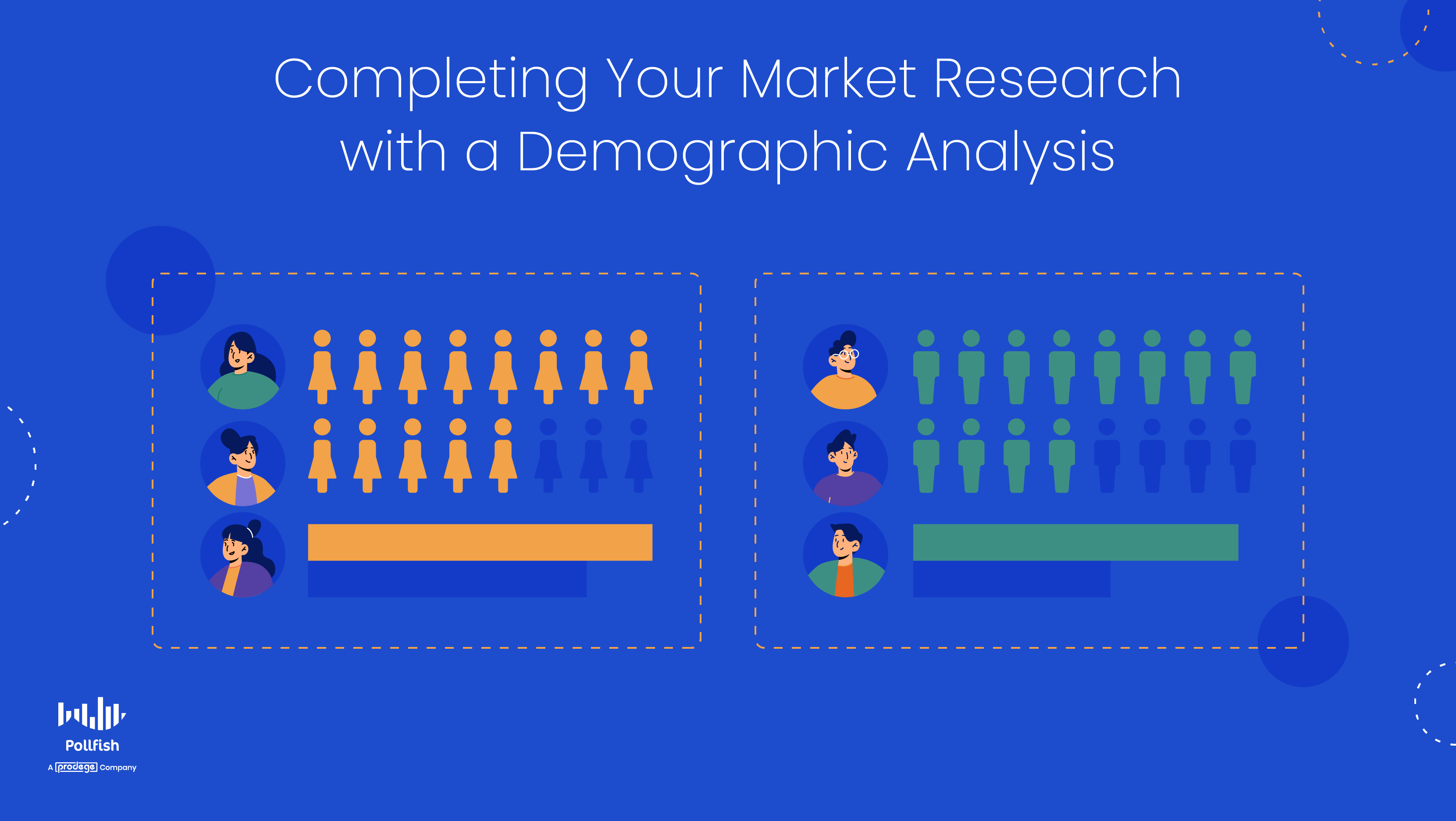
Conducting a demographic analysis is a critical component of your market research and consumer analysis efforts.
In today’s hyper-competitive age, you need to understand your market precisely, including its key players, namely your target market — the group of customers most likely to buy from you.
To market successfully, your target market can’t be anyone. Instead, you’ll need to narrow down the targets of all your marketing campaigns by identifying them and running an analysis on them in relation to your products and services.
There are many characteristics making up a target market, with demographics being at the forefront. As such, it is key to begin your target market analysis by running a demographic analysis.
This article expounds on the demographic analysis, including its importance, makeup and how to properly conduct one to complete your market research.
Understanding the Demographic Analysis
Also called a demographic market analysis, a demographic analysis refers to the collection and examination of a specified list of characteristics pertaining to groups of people and populations. These characteristics differ from those used in a psychographic or lifestyle analysis.
A demographic analysis is a kind of technique that identifies and analyzes the demographics of a population. It then uses this data to develop an estimate of the population. This technique allows market researchers to understand key demographic aspects of its target market. Demographic data includes the following factors:
- Age
- Gender
- Race
- Ethnicity
- Socioeconomic information including:
- Employment
- Education
- Income
- Marital status rates
- Location data including:
- Country of residence
- State, territory, county, zip code, etc.
- Device usage
- Which device
A demographic analysis involves learning about the amount of each kind of demographic group present in a target market. This is because a target market is not one set of demographics; rather it is a multitude of demographic groups consolidating into the broad group that comprises all your target customers.
As such, a demographic analysis is used in market segmentation, along with when you construct customer personas. These market research techniques involve classifying and breaking down your target market into smaller, more defined groups that are easier to target than the overall target market.
Aside from studying the composition of a target market, a demographic analysis is also used to develop an understanding of how a population has changed over time. This involves evaluating birth, death, and migration.
In addition, you can further analyze how demographics have changed by conducting longitudinal studies via longitudinal surveys. These allow you to study a population over a period of time.
All in all, a demographic analysis includes all the aspects that allow researchers to measure the dimensions and dynamics of populations.
The Importance of a Demographic Analysis
A demographic analysis is critical to market research for a number of reasons.
First off, it is the chief method of identifying and classifying your target market, which represents those who are most likely to patronize your niche and products and most importantly, your business.
Before you can study your customer behavior, consumer preferences and how to create your marketing campaigns accordingly, you’ll need to know the core aspects of your target market, which is its demographics. This is because you wouldn’t be able to scope out the habits and lifestyles of your customers, if you don’t even know who they are.
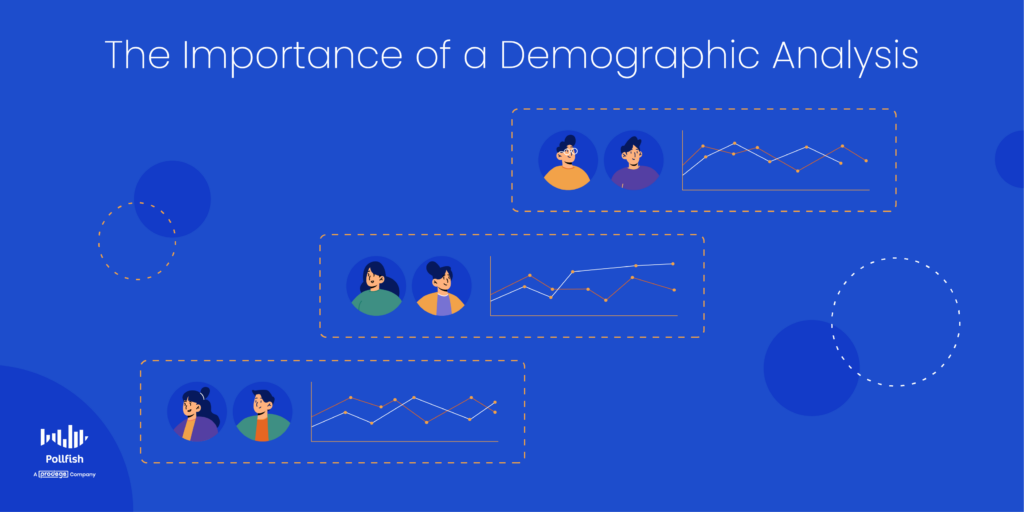
Next, this kind of analysis can assist you with two other key objectives. These include the following:
- Discovering the sectors and subgroups making up the population
- Generating a comprehensive portrait of the traits that a typical member of each of these sectors possesses.
These two methods allow you to get a comprehensive understanding of the statistical information of all those in your target market. With this information in tow, you can move forward by studying your target population more closely, by conducting a psychographic analysis.
This analysis is also useful in that it allows you to form a specific demographic profile. Also called a customer persona, this profile presents information about a typical member of a certain customer segment. It assists in creating a visual representation of a hypothetical target market. For example, a market researcher may focus on the following persona: single men between the ages of 18 and 34, and are college-educated.
A demographic analysis is particularly valuable if it is used to compare demographics residing in different places. This is not just useful for those operating brick-and-mortar shops, as digital businesses must understand all of their customers and how to appeal to them.
And since it is unlikely for all customers to live in one area, it is key to study demographics across geographies. As such, it is also useful for local SEO, in which digital users are targeted by their location.
It is useful to provide two comparison sets of data: comparable communities and the state or United States as a whole.
Demographics are important to analyze, as they allow marketers and market researchers to comprehend how their target market searches for information online, along with how it purchases products.
In this way, demographic data is particularly useful for businesses, as it enables them to understand how to market to their consumers, which helps raise sales and revenue. In addition, understanding your demographics allows you to plan strategically for future campaigns.
All in all, demographics are critical for market research, given that demographics encompass human populations and how they impact the market.
How to Form a Demographic Analysis for Market Research
To create a demographic analysis, particularly for market research, you’ll need to understand who makes up your target market.
As such, you’ll need to gather this info by eliciting information on who buys products and services in your niche. You can also do so by discovering your demographic makeup from customers who have already purchased from you.
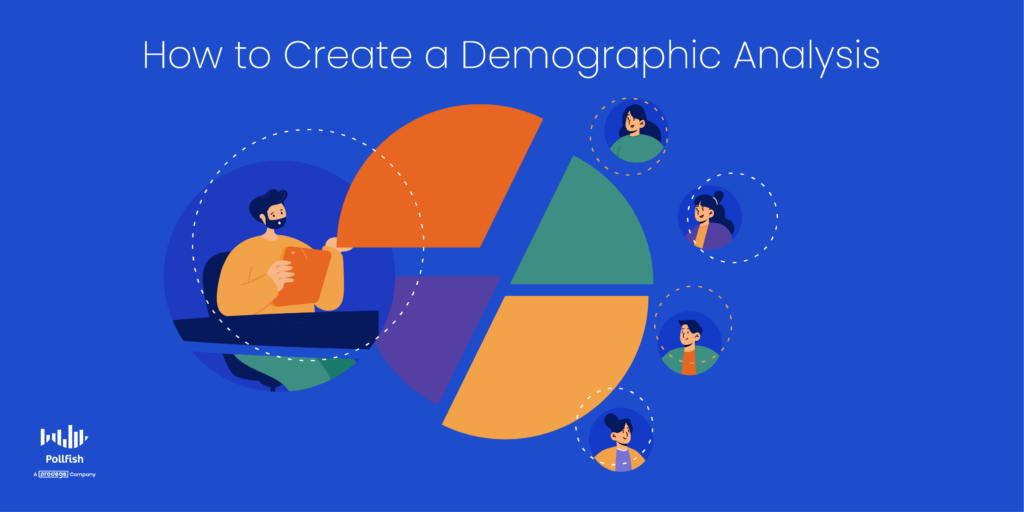
This requires conducting both secondary and primary research. The following steps provide a walkthrough on how to create a demographic analysis:
- Begin by conducting secondary research. Start at the general level by scouting for articles and other resources on the demographics in your niche.
- Use demographic data on particular locations from government websites.
- For example, the US Census Neighborhood Explorer.
- Based on your secondary research, put together your findings into preliminary customer segments.
- Then, use market research software to conduct primary research.
- You can opt for syndicated research, but you won’t control the study, should you take this route, as it will be proprietary to the market research firm you use, along with its partnering companies.
- Create surveys with screeners that require the demographics you’ve discovered from your secondary research.
- It is optimal to create a single survey with multiple audiences — whether you’ve conducted secondary research or have obtained little to no secondary demographical data.
- This way, you can ask multiple audiences for their thoughts on your niche and whether they would buy your products or services.
- You can segment your demographics more accurately this way, as your survey results may not perfectly align with your secondary research.
- Be sure to send your surveys to specific people, such as previous customers or those on an email list, aside from only deploying your surveys via your online survey platform.
- It is crucial to send follow-up surveys, or at least follow-up questions that ask for more clarification on preceding questions.
- Your market research platform should offer advanced skip logic to do this, as it routes respondents to relevant follow-up questions based on their answers to previous questions.
- Make sure you iterate your survey research by covering all demographics, as you may have some demographics in your target market that you are completely unaware of.
- Analyze your findings.
- Put together a document with various segments based on their demographics.
- You may use them to build preliminary customer personas.
- Start coming up with questions for a psychographic analysis, which covers lifestyles and behaviors.
Understanding the Makeup of All Your Customers
A target market analysis is of the utmost importance before you tackle any marketing campaign. It begins with conducting a demographic analysis, which informs you of the statistical makeup of various characteristics of your consumers.
In order to carry out an accurate and timely demographic analysis, you’ll need a quality online survey platform.
You should use an online survey platform that makes it easy to create, deploy and analyze all kinds of surveys. It should offer random device engagement (RDE) sampling to reach customers in their natural digital environments, as opposed to pre-recruiting them.
Your online survey platform should also offer artificial intelligence and machine learning to remove low-quality data, disqualify low-quality data and offer a broad range of survey and question types.
Additionally, it should also allow you to survey anyone. As such, you’ll need a platform with a reach to millions of consumers, along with one that offers the Distribution Link feature. This feature will allow you to send your survey to specific customers, instead of only deploying them across a vast network.
With an online survey platform with all of these capabilities, you’ll be able to quickly gain insights into your customer demographics and analyze them at speed.
Buy a Survey Audience and Survey Respondents Straight from the Source
Buy a Survey Audience and Survey Respondents Straight from the Source
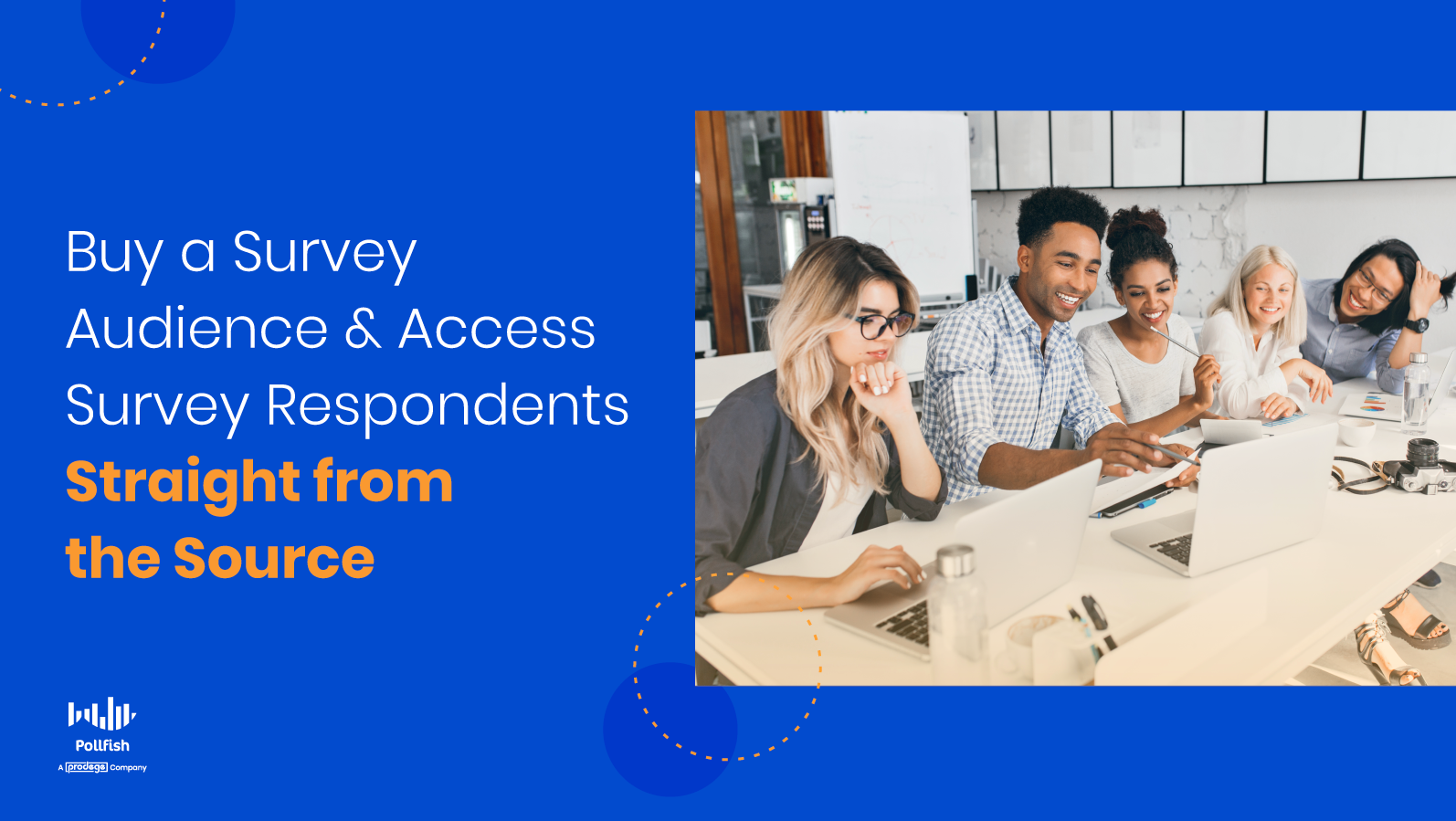
As market research professionals, we urge you to buy a survey audience to access a wealth of survey respondents at your fingertips.
While it may be tempting to opt for a market research panel, buying survey respondents straight from the source is a much more effective method for conducting research and having constant access to the correct survey respondents.
You wouldn't want to survey the wrong audience; it should be precise to both your target market segments, along with to the respondent qualifications of a particular research campaign or survey.
Both the former and the latter are going to vary; as such, there is no such thing as a single survey target audience.
Thus, the makeup of your survey audience will differ based on the shifts in your target market and the different subjects and objectives of distinct research campaigns.
As such, you’ll need to reach out to several populations based on your various research campaigns and needs. To do so, you’ll need to identify, target and buy the correct survey audience.
This article explores how to buy a survey audience, the importance of reaching the right survey respondents, how the Pollfish platform does so with random organic sampling and much more.
Table of Contents: Buy a Survey Audience and Survey Respondents Straight from the Source
- Target the right survey audience
- Removing fraud incentives
- Our audience operates differently
- Audience size and source matter
- Selecting the right consumer
- The right audience makeup
- Our expansive reach means we can do what no other market research provider can
- The Importance of Buying a Survey Audience
- The Proper Target Survey Audience is Not the Same as Market Segments
- Identifying and Reaching the Poper Respondents
- Studying Your Target Audience in Greater Depth
- Being Able to Detect and Observe a Bad Customer Experience
- Having Constant Access to the Correct Survey Audience Population
- Using Random Device Engagement and Organic Sampling
- Market research panels are flawed
- How to Buy a Survey Audience
- Buying a Survey Audience as Part of the Survey Process
- The Two Pollfish Plans
- Accessing Market Research Data to Buy Survey Audience
- Two Main Ways to Buy a Survey Audience
- How to Buy Survey Respondents
- The Pollfish Platform Has Your Back
Target the right survey audience
You ought to target the right survey audience without being bogged down by survey fraud and a host of other issues that non-organic probability sampling methods bring.
We identified data-quality issues - such as panel fatigue and unconsciously biased responses that are unavoidable with career panelists early on. To stamp out low-quality data, our platform is designed to avoid career panelists with narrow targeting and a system of quality checks.
We’ve also created our own distributed audience network to be the first wholly-owned and operated network made up of real consumers around the world.
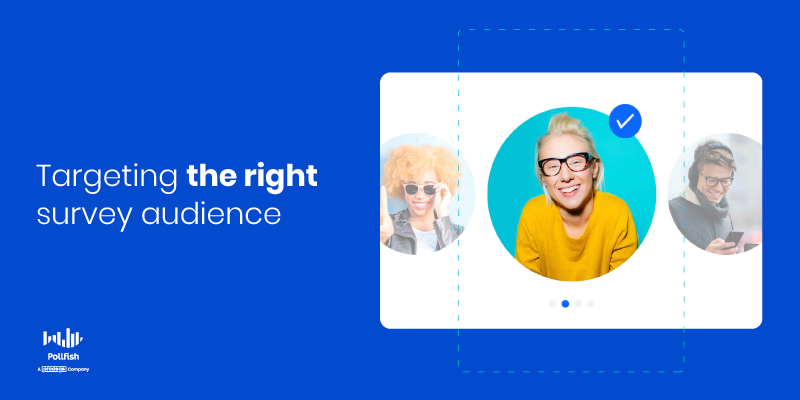
Whether it’s cracking down on low-quality survey data or accessing real customers, the Pollfish organic sampling method (see the section called Using Random Device Engagement and Organic Sampling) executes a meaningful market research campaign.
Our platform targets the correct survey audience, one that can be exclusively defined and hyper-targeted to ensure that only the most relevant respondents partake in your survey campaigns.
Removing fraud incentives
Most traditional market research panelists are survey respondents who sign up in exchange for cash or airline points.
Because these incentives are static and cumulative, they often become “professional survey-takers” — they understand how, and are motivated to bypass screening questions to ensure they can take as many surveys as possible, without providing quality responses.
Our platform mandates a screening section, which you can customize to be as granular as possible, thereby allowing you to avoid poor-quality respondents. Just use our screener to qualify respondents on a wide range of demographics and psychographic qualities.
We even offer screening questions in addition to inputting survey respondent qualifications in the screener section.
Our audience operates differently
Because we partner directly with app developers, the developer defines appropriate and specific non-cash survey incentives in exchange for completed surveys. These incentives benefit real consumers without motivating them to become career panelists.
Instead, respondents are motivated to complete a survey truthfully and are rewarded with a pleasant survey experience (and an incentive after they complete the survey).
With so many mobile apps in existence, there is a wide breadth of non-monetary survey incentives to reward your respondents, draw them to your survey and provide accurate data.
For example, in the case of a news app, the survey incentive might be a premium article, or in a fitness app, access to a free yoga lesson.
In a mobile game, the incentive can take the form of in-game tokens, lives, access to higher levels and more. You can get creative with how you offer these incentives, and our app partners always are.
Audience size and source matter
Since we operate the largest global audience of survey takers, our vast network enables us to reach very narrow consumer segments, meaning we can reach very specific target audiences, the kinds you wouldn’t be able to target otherwise.
That’s because our survey audiences are hyper-targeted.
The screening questions we mentioned earlier (Removing fraud incentives section), allow you to do just that.

With the screening questions, you can permit or disqualify potential respondents based on how they answer your screening questions. In other words, it allows you to fine-tune your survey audience targeting even more distinctly.
However, what truly makes us stand out against the crowd of other survey sample providers is our relationships with our partner apps that ensure high-quality responses from those targeted segments.
Because of this relationship, our surveys and incentives are never boring or lackluster. Instead, the respondents have an engaging survey environment where they’re prompted to complete entire surveys. Thus, it’s a win-win situation for researchers and survey respondents alike.
Selecting the right consumer
Our more than 120K+ app partners are manually vetted and only get paid when they deliver a response from a qualified individual that fits the targeting criteria request and meets our strict quality controls.

This differs from the traditional approach that requires “impaneling” respondents, making it prohibitively expensive to throw out questionable responses.
But on the Pollfish platform, our AI-powered system automatically disqualifies respondents who don’t fit the entire targeting criteria, along with those who provide faulty answers and low-quality data.
That’s because our wide range of quality checks weed out gibberish answers, respondents who don’t pay attention, VPN users who would otherwise taint geographic targeting and other sources of low-quality data.
The right audience makeup
New respondents are joining our consumer network every day. Our network of app providers and survey respondents is now in over 160+ countries - and growing - as our app-based partnerships give us a fast and efficient way to reach and expand our market research audience.
We use a rolling profiling model to keep our audience information up-to-date and collect a wealth of data upfront including demographic, location, gender, carrier and mobile usage data (a first in the space).
This makes it easy for you to create surveys using already-collected demographic data and spend time seeking answers for your business, not drafting questions to define your audience makeup.
Our expansive reach means we can do what no other market research provider can
We narrowly target consumer populations and send surveys to the exact respondents you want to reach, apply AI fraud detection to remove responses that don’t meet our quality standards and still have plenty of responses to satisfy your targeting quotas — all while they are organically engaged in mobile apps on their devices.
We call this revolutionary methodology organic sampling, specifically Random Device Engagement on the Pollfish platform. We’ve used it to accurately predict some of the most confounding political events of recent decades — where traditional methods fell short.
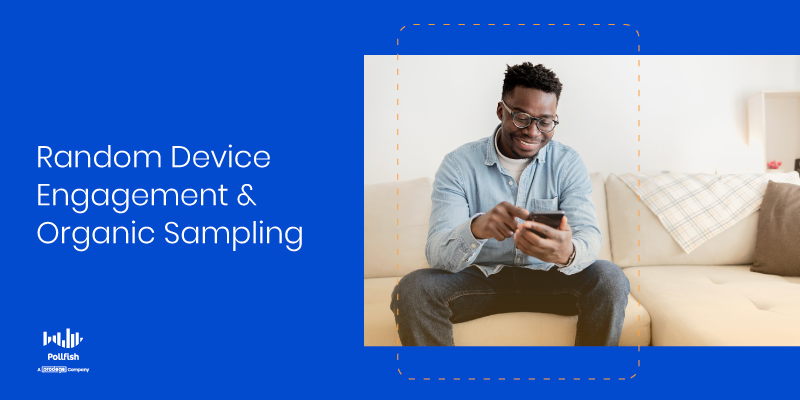
Learn more about the Pollfish methodology.
The Importance of Buying a Survey Audience
Buying a survey audience is essential to your studies. Many reasons support this claim. Let’s explore some of the major arguments as to why buying a survey audience is an absolute must for your market research campaigns.
The Proper Target Survey Audience is Not the Same as Market Segments
The reason that upholds the importance of buying a survey audience ties in with the need to use the proper survey target audience. You wouldn’t want to reach out to irrelevant population segments, as they are not part of your target market.
In addition, even if you have identified the distinct market segments and customer personas in your target market, they are not equivalent to your target survey audience.
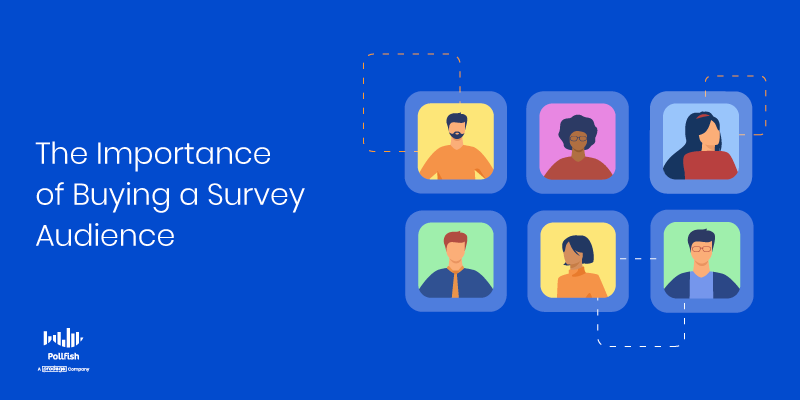
This is because the market segments and customer profiles that you’ll need to survey will vary from study to study and from one survey campaign to the next.
As such, your survey audience is not the same as your market segments and broader target market.
Instead, your survey target audience is a far more narrow and specified group contingent on a particular survey campaign. Sometimes, it’ll be even more limited, as it will be exclusive to a particular survey part of a larger campaign.
Identifying and Reaching the Poper Respondents
To reach this distinct group of respondents, you’ll need to have them in your sampling pool. To do so, you’ll need to identify them first, before you buy them. That’s something you can achieve with a market research platform, particularly an online survey platform.
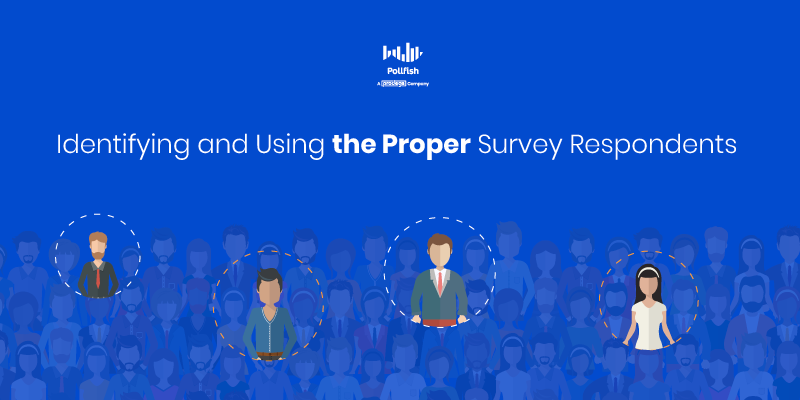
Such a platform would handle identifying and reaching your correct survey audience. But you would need to buy your survey audience first.
Buying this audience is also important for several other reasons.
Studying Your Target Audience in Greater Depth
Having access to the correct survey audience is essential for market research. As aforementioned, you wouldn't want to study the wrong populations. Having your survey audience within easy reach allows you to study your customers in great depth.
This is important for a variety of reasons, from delighting your customers, to retaining them. Customer retention is more important than customer acquisition, yet studying the proper survey audience allows you to achieve both: retaining your customers and gaining new ones.
To study them, they’ll need to be accessible to you and your market research efforts. As such, it’s crucial to buy your survey respondents.
Being Able to Detect and Observe a Bad Customer Experience
Did you know that almost half of all customers stop doing business with a company due to a bad CX? In fact, 47% of customers stop buying from businesses after a negative experience.
But having a bad experience with a brand doesn’t always compel customers to make light of it. As such, not all of your customers will complain, thereby you won’t have awareness of the poor customer experience your brand provided.
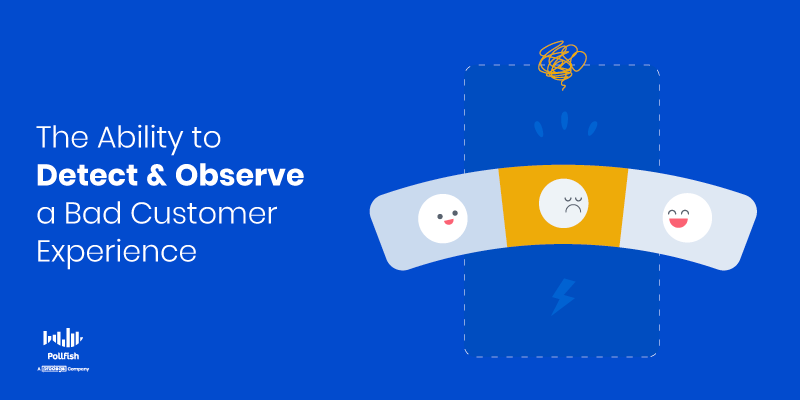
91% of unhappy customers will leave a business without complaining. Thus, while many brands place a lot of effort into forging customer happiness, they can’t avoid all kinds of customer dissatisfaction and frustrations.
Fortunately, with survey research and access to the correct survey audience, you’ll never have to be kept in the dark about poor customer experiences. Instead, you can deploy regular consumer surveys and brand trackers to be in the constant know regarding your customers' wants, needs, sentiments, opinions, aversions, and more.
Once more, this all depends on having access to the correct survey audience, which is why you’ll need to buy your survey audience through a reliable online survey platform.
Having Constant Access to the Correct Survey Audience Population
When you buy a survey audience, you can also rest assured that you always have access to the correct audience. That’s because a strong online survey platform will allow you to hyper-target your target survey audience as narrowly as you’d like.
It will even allow you to use multiple audiences in a single survey. This provides a holistic survey audience access. It’s objectively important to have this option within constant reach in your online survey platform.
But having access to the correct survey audience once or for one survey isn’t enough. As aforementioned, it is key to keep constant tabs on your customers and your brand experience. Avoiding a bad CX is a must, but you won’t be able to do it via a one-and-done approach.
Thus, while using syndicated research may give you access to your target survey audience, it won’t give you continued access to your customers — unless you’re willing to break the bank. This form of research involves using a market research firm to carry out and own all research data.
This approach is therefore not ideal, as it is expensive and won’t allow you to have a constant grasp of your data. Instead, when you buy a survey audience with Pollfish, you are the sole owner of your data and have constant access to our 250+ network of consumers ready to take your surveys.
Using Random Device Engagement and Organic Sampling
Equally important as buying a survey audience is using the proper mechanism for reaching it. Did you know that the way you reach your survey respondents dictates the nature of their responses?
That’s because some respondents will be more inclined to take it than others, while some will be more prone to biases (especially if they are pre-recruited via panels).
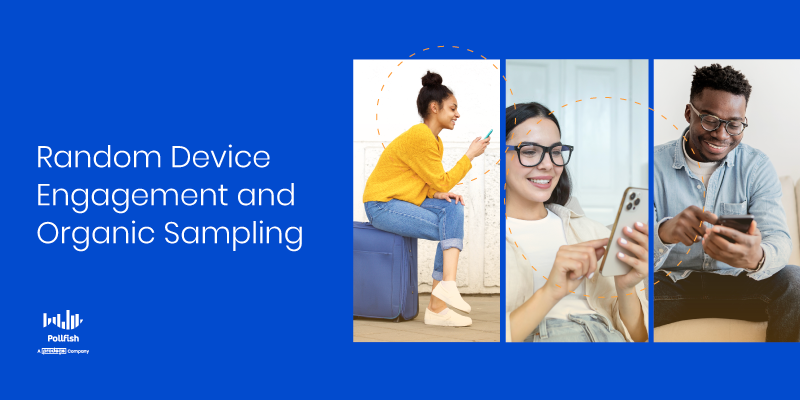
As such, the method for reaching an audience goes hand in hand with buying a survey audience; both are critical to your studies, as both factor into its quality.
To avoid as many survey biases as possible, keep respondents engaged in your study and forgo survey fraud, you ought to use a platform that runs on organic probability sampling.
As such, you should use a potent market research platform that leverages this mechanism and allows you to easily access your audience.
Below we’ll delve into what organic probability sampling is, along with the RDE method.
Market research panels are flawed
Research panels are one of the most common techniques used to identify and reach survey panelists and other market research participants. While they are a popular option, they do not provide you with the quality that organic sampling does.
At Pollfish, we avoid using conventional panels for this very reason.
Instead, we’ve developed our very own market research methodology called organic probability sampling. This involves sourcing our audience of real consumers via partnerships with app publishers, which allows us to conduct randomized, yet highly targeted surveys to verified respondents.
Our unique process is known as Random Device Engagement, (RDE), which uses the organic sampling approach for finding and obtaining survey participants.
A kind of organic probability sampling, RDE polling relies on advertising networks and other digital platforms to engage potential respondents wherever they visit voluntarily.
Thus, RDE catches users where they choose to be, as opposed to being in unnatural environments, where they’ll be less likely to pay attention, let alone take part in a survey.
That’s because, in unnatural environments, the thought processes of respondents can deviate from those in more natural environments, which results in artificial considerations that can influence their responses. Thus, RDE is the better approach to reaching respondents and getting honest, attentive responses.
Random Device Engagement / Organic Sampling includes a variety of digital platforms and properties to survey respondents, such as:
- Mobile sites
- Apps
- Websites
- Mobile games
This randomized method of reaching respondents ensures you avoid acquiescence bias from your respondents, due to the anonymous nature of this route. This means you’ll avoid respondents who respond with answers that have positive associations.
This is because these surveys are completely anonymized and therefore don’t have the same pressures as a panel.
In addition, RDE allows you to steer clear of the sampling bias, which occurs when the respondent selection process is not conducted at random, which then leads to the under or overrepresentation of a certain market segment.
With over 250 people in our network, we never have to worry about data quality, delivering only the best, most authentic, and most useful insights to our clients.
How to Buy a Survey Audience
Now that you understand why it’s important to buy a survey audience, along with how the Pollfish platform provides the supreme respondent-reaching mechanism and quality survey data, it’s time to learn how you can buy a survey audience yourself.
Fortunately, the Pollfish platform values user-friendliness and ease of use, making it a quick and easy process.
On our platform, buying a survey audience is deeply tied to the entire survey creation process.
Buying a Survey Audience as Part of the Survey Process
So what does it mean when the survey creation process is deeply connected to buying a survey audience?
In Pollfish, it means that as you create your questionnaire, you can also seamlessly switch to the “audience” tab and edit your survey target audience.
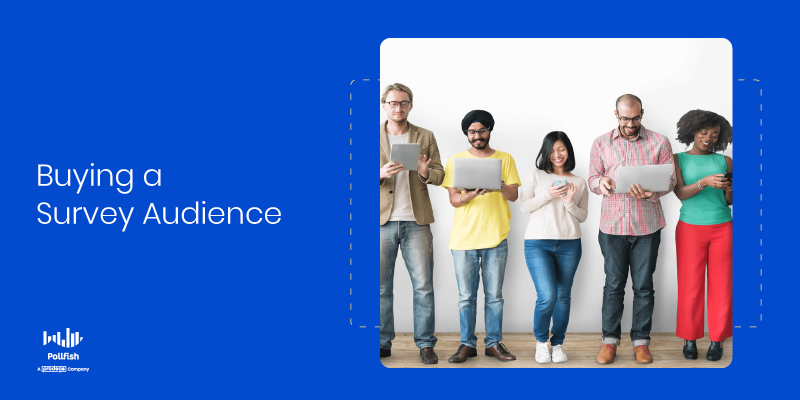
This section of your survey project is where you input ALL of your respondent criteria. In market research, this is typically referred to as the screener, or the screening section. This section includes all the demographic, psychographic and geographic criteria you can use to target specific survey target audiences.
You’ll need to register with Pollfish to view the screening section, dashboard, and the rest of the platform. You can do this by signing up for either a Basic Plan or an Elite Plan.
The Two Pollfish Plans
Determine the best Pollfish plan for your business, organization or personal need. When you register for an account, you’ll have access to the platform to understand how to buy a survey audience firsthand.
Our market research SaaS offers two plans. Read through the nuances, offerings and possible limitations of both before you sign up.
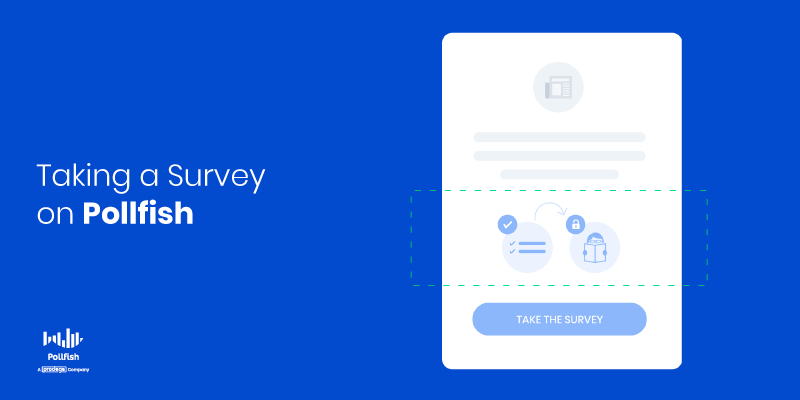
- The Basic Plan
- Part of our Freemium model
- Includes basic features
- Allows you to pay as you go, meaning there is no minimum or maximum deposit.
- Each completed survey costs $0.95.
- Survey prices are uncapped.
- This is accessible to 10 people in your team.
- Which features it includes:
- A/B testing (Monadic)
- Advanced question types
- An account budget
- Data Exports (SPSS, CSV, PDF, Crosstabs)
- Demographic information on results
- White-labeled reports
- Open-ended grouping
- Full survey review and edits
- 24/7 support
- Which features it excludes:
- Conjoint analysis
- 4-6 Screening Questions
- Van Westendorp Price Sensitivity Meter (for pricing studies)
- BigQuery Export
- Crosstab Reports Designer
- Survey Results Translation
- Single Sign-On (SSO)
- At last, this plan offers the Distribution Link feature.
- This grants you more options for deploying your survey, those that go beyond using our Random Device Engagement method.
- Instead, it grants you full control of how and to whom you send your surveys.
- Now available with both plans, learn more about it under Elite Plan, below.
- The Elite Plan
- This plan also prices each completed survey at $0.95.
- It includes capped pricing.
- The plan requires an account deposit.
- This deposit works in the manner of credits. Each dollar amount is equivalent to 1 credit.
- These credits are what you use to pay off each survey complete and other survey costs.
- This plan is suited for all business types and organizations with larger market research goals and needs.
- As such, it includes more advanced features, along with all those that the Basic Plan includes.
- For example, it includes the Distribution Link feature.
- This nifty feature allows you to send your survey your way.
- That means, you can send your surveys to either:
- Specific individuals. This usually includes targeted respondents to whom you have contact information.
- This can include their email address or their social media accounts.
- This kind of information may come from paying customers, or those who signed up for marketing collateral, such as newsletters, thereby giving you their contact info.
- You may also get this information by interacting with your followers on different social media channels.
- Through specific online channels, such as social media, the homepage, a static page or landing pages.
- This is especially useful if you seek to send your surveys through your own digital channels and properties, as opposed to others, such as those in our RDE network of website and app publishers.
- Specific individuals. This usually includes targeted respondents to whom you have contact information.
- Which features it includes: (that the former plan lacks)
- Conjoint analysis
- 4-6 Screening Questions
- Van Westendorp Price Sensitivity Meter
- BigQuery Export
- Crosstab Reports Designer
- Survey Results Translation
- Single Sign-On (SSO)
If you’re interested in learning more, or are ready to sign up with Pollfish to start cranking out all the market research projects you desire, visit our page: Pollfish Plan Pricing.
Accessing Market Research Data to Buy Survey Audience
Once you register with Pollfish, sign in to your account. Once signed in, you’ll be able to access all of your market research data — including the screener where you select your desired survey audience. The Pollfish platform includes the following interfaces:
- The Dashboard
- New project creation
- Here, you can create new survey campaigns
- List of ongoing surveys; this includes
- Running surveys
- Paused surveys
- You can include each survey under different folders
- New project creation
In your dashboard, you can choose what you want to do with your survey campaigns, such as combing through ongoing surveys, paused surveys or those that have already reached completion. The latter refers to surveys that have received the amount of completes you originally added as part of your quotas.
Two Main Ways to Buy a Survey Audience
You can also choose to create an entirely new project. For this purpose, you’ll find the large blue button on the top right corner of the Dashboard, called “Create Project.”
As such, there are two main ways to buy a survey audience in Pollfish and edit it to your liking.
The first way to buy a survey audience is by creating an entirely new project. This grants you three options, which you can learn about in the next section. Essentially, these options provide the way you build out your survey.
The second way to buy survey respondents is by editing a survey that’s already in progress, AKA, a survey that is already running. In this second method, you can choose respondents by pausing a running survey.
Remember, in both ways, you’ll need to buy your survey audience by accessing the last section (or step) of the survey process, which is the checkout.
For more information on how to make your own survey in just three easy steps, read the article in the hyperlink.
How to Buy Survey Respondents
Now that you understand how buying survey respondents works on Pollfish, including the fact that it is innately tied to forming surveys themselves, let’s delve further. Here, we’ll teach you how to make that knowledge more actionable.
The following provides step-by-step instructions on how to buy a survey audience on Pollfish:
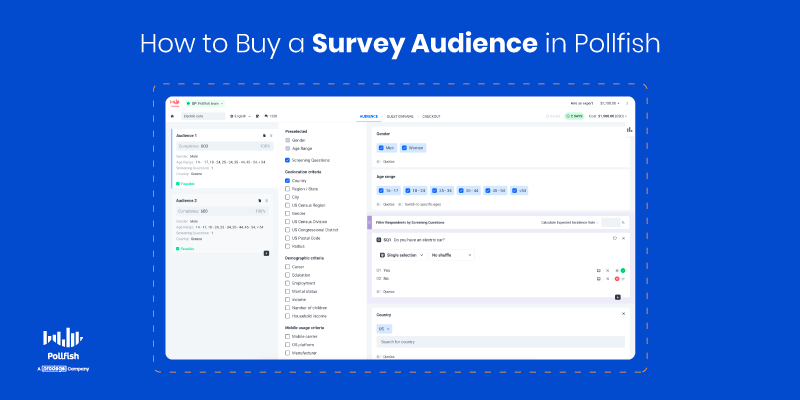
- Register or log in to the Polish platform.
- Choose how you want to buy your respondents based on the two main ways explained above.
- If you seek to edit an ongoing survey (or a lauded survey), go to your dashboard.
- In your list of surveys, choose from the following surveys:
- All
- Draft
- Under approval
- Approved
- Running
- Paused
- Completed
- Under Edit
- In this list, click on the one you wish to edit.
- Edit your survey audience.
- You can change anything on the audience page, such as applying /removing filters, adding/changing quotas, etc.
- You cannot edit the screening questions.
- Go to the Checkout and pay for your new survey audience.
- In your list of surveys, choose from the following surveys:
- If you seek to create a new project, click on the big blue button labeled: “Create project.”
- You’ll have three options for creating a new survey project. These include:
- From scratch
- From template
- Link 3rd party
- Next, you’ll be asked the following: "How would you like to collect responses to your survey?”
- Choose from the following options:
- Buy a survey from the Pollfish audience (The RDE method)
- Send a survey to your own audience or another survey panel
- Next, you’ll be brought to the 3-section survey creation interface.
- Choose your precise survey audience in the “Audience” section.

- Here, you can input as many demographic/ location/ psychographic features.
- You can add screening questions if you have the Elite Plan.
- After you’re done choosing all your respondent criteria, move on to the next section, the Questionnaire and create your survey.
- Go to the last section, the Checkout. Here you can:
- Choose a payment method.
- Choose to schedule your survey or launch it immediately.
- View your cost analysis.
- Pay and complete your survey. Congratulations, you’ve bought a survey audience!
- You’ll have three options for creating a new survey project. These include:
The Pollfish Platform Has Your Back
Regardless of the kind of market research project you seek to build out, Pollfish always has your back. Our dedicated team of market research experts is here to help you 24/7. Our platform is second to none when it comes to working on any topic that requires research.
Whether you seek to run a product satisfaction campaign, measure your consumer loyalty, run a brand tracker, understand your brand reputation or improve your customer service, we’ve got you covered.
That’s because you can create any type of survey — and if you’re ever stumped on how to get started creating yours, you can choose from various survey templates and edit them to your liking. We currently offer 19 templates for a distinct range of topics.
Just remember to study the correct survey target audience, as it differs from your broader target market and its various segments and customer personas. Luckily, you can filter your survey audience as granularly as you need to on our platform. Happy researching.














